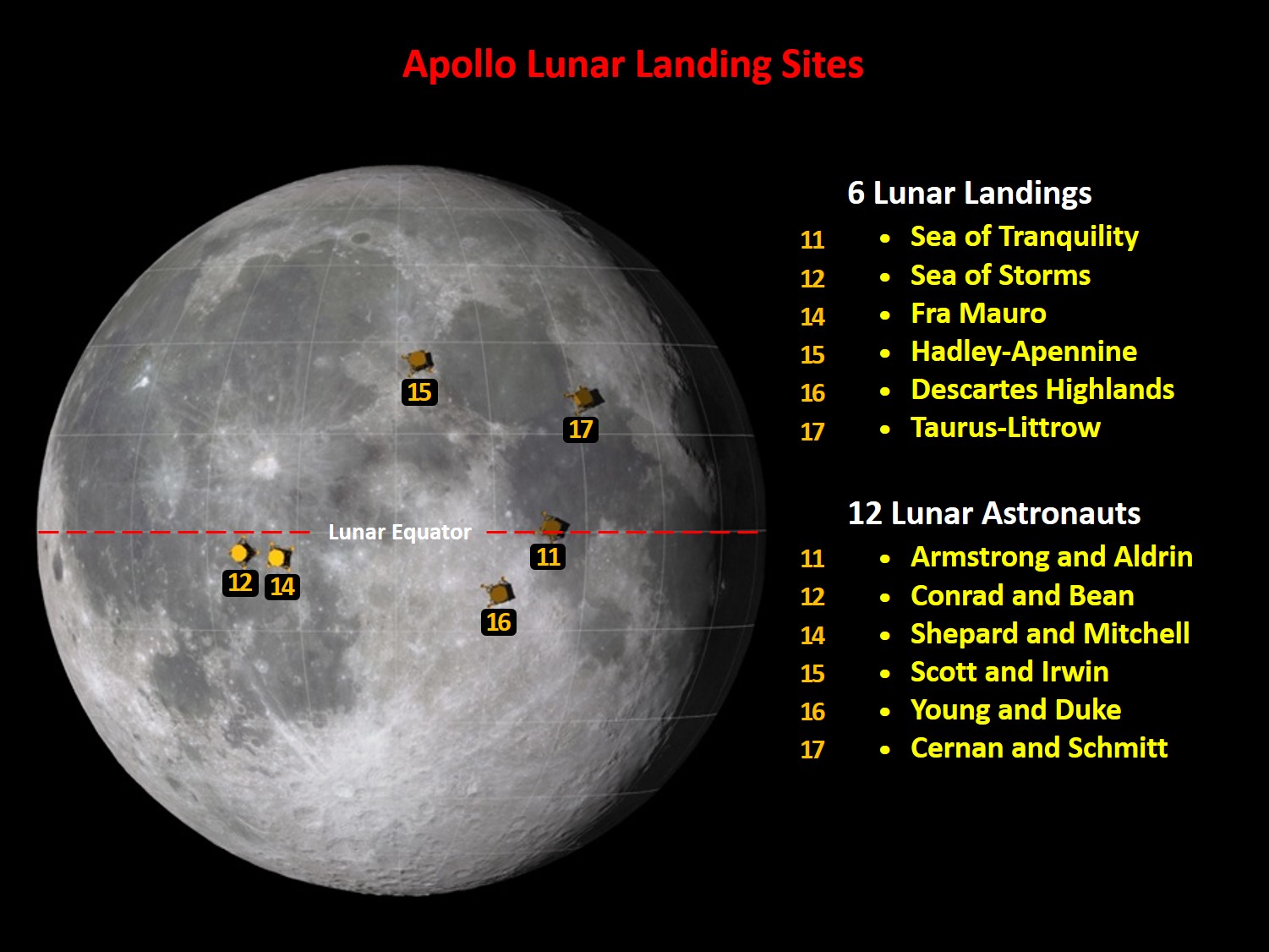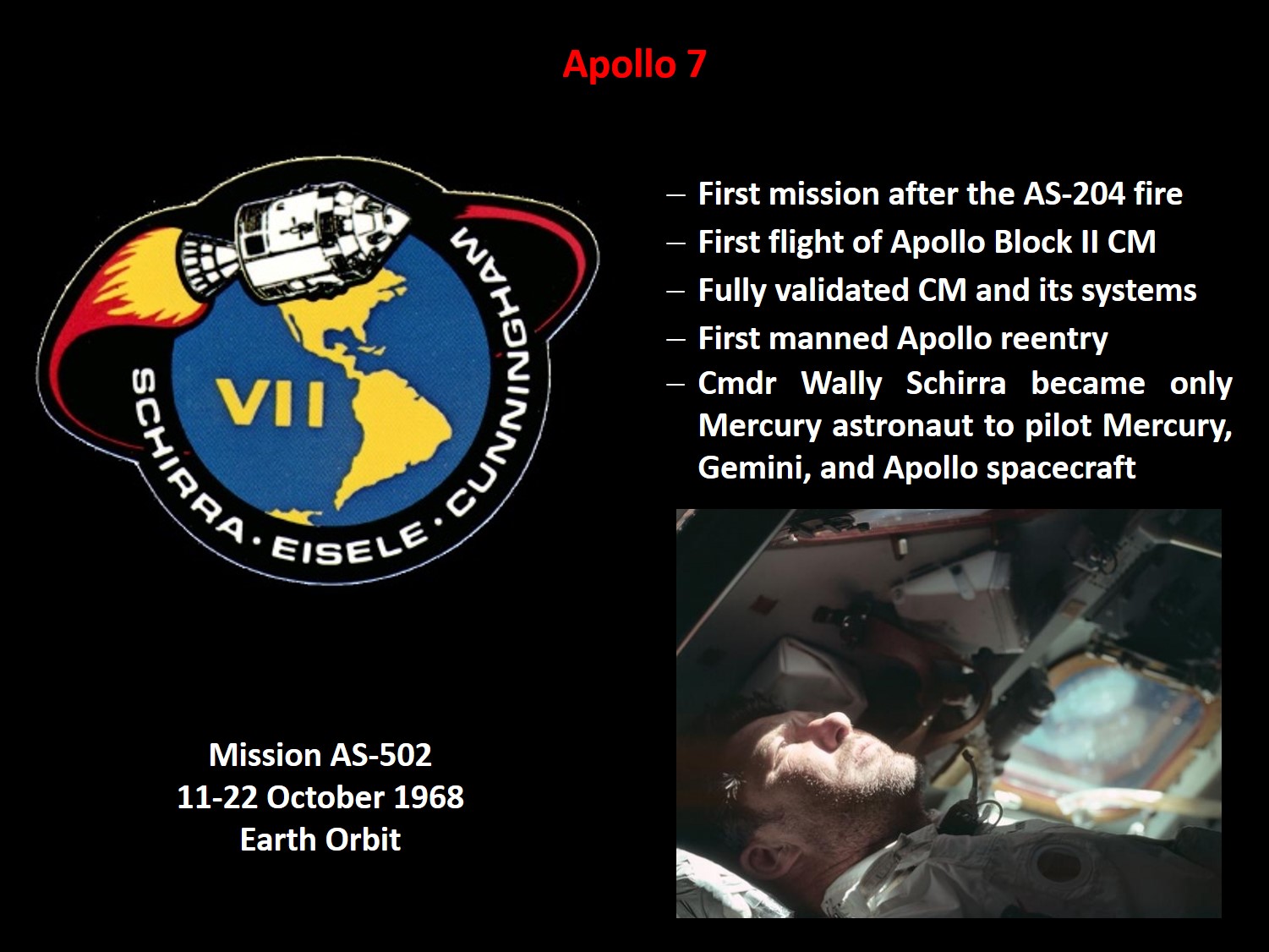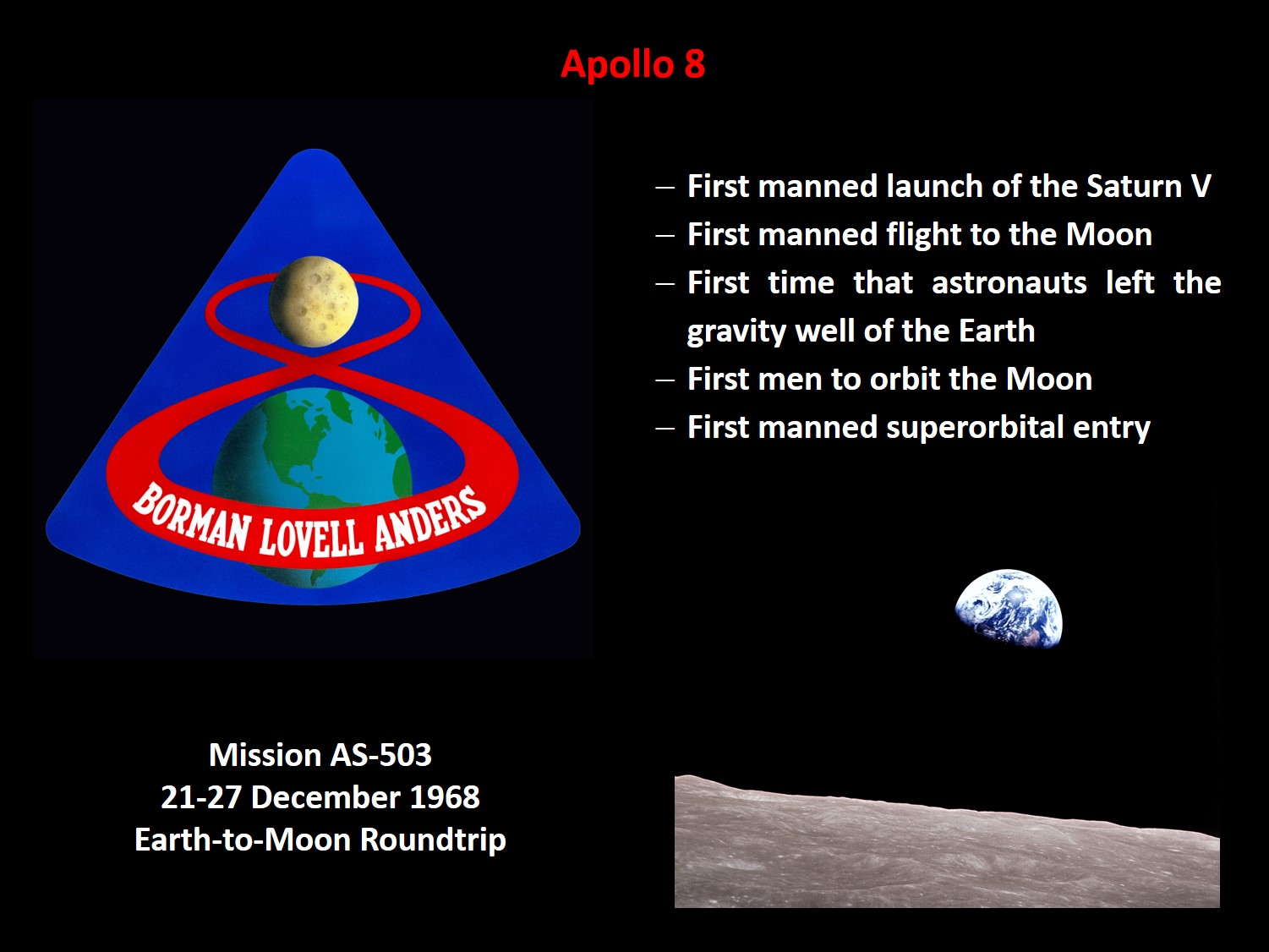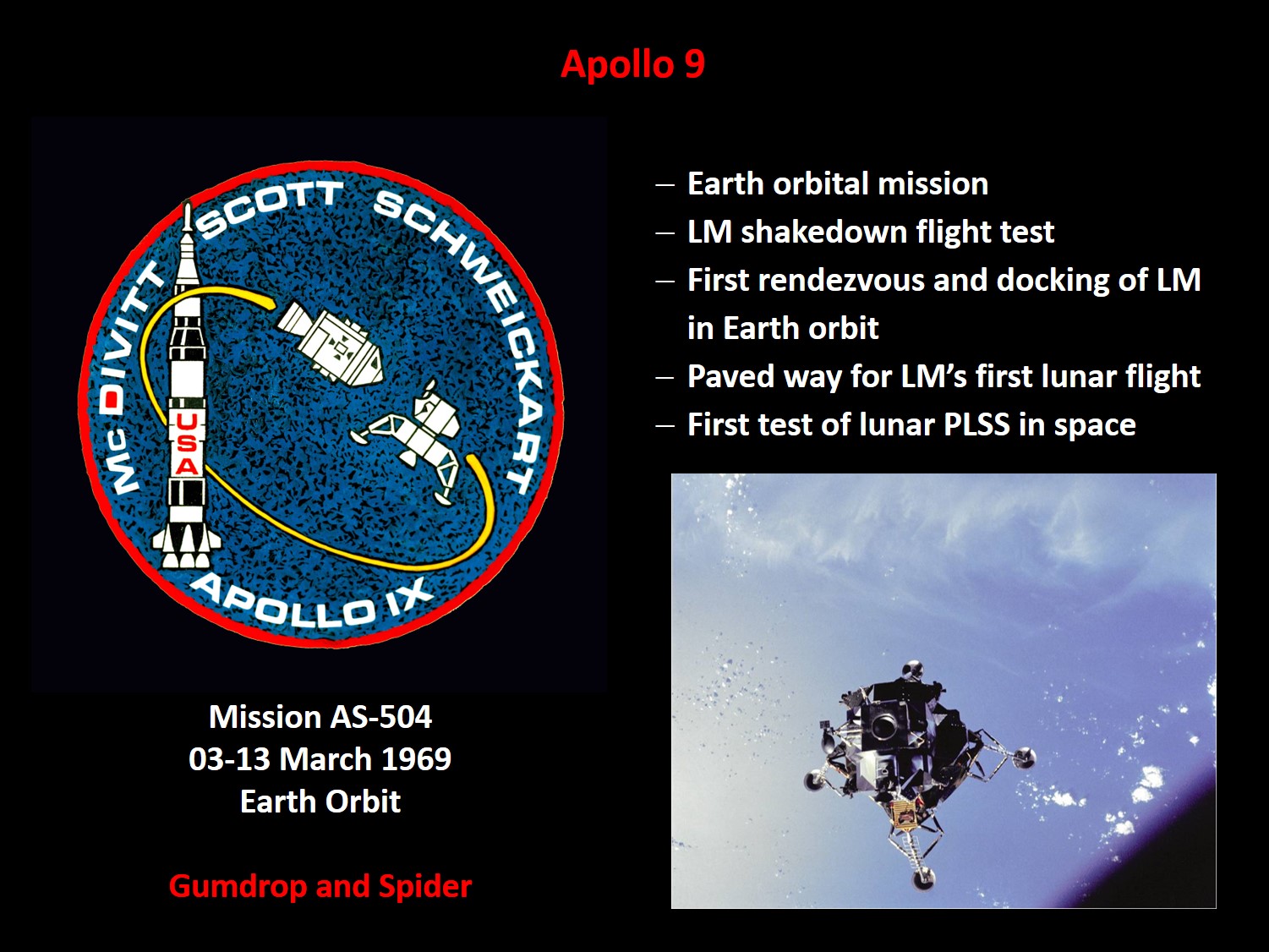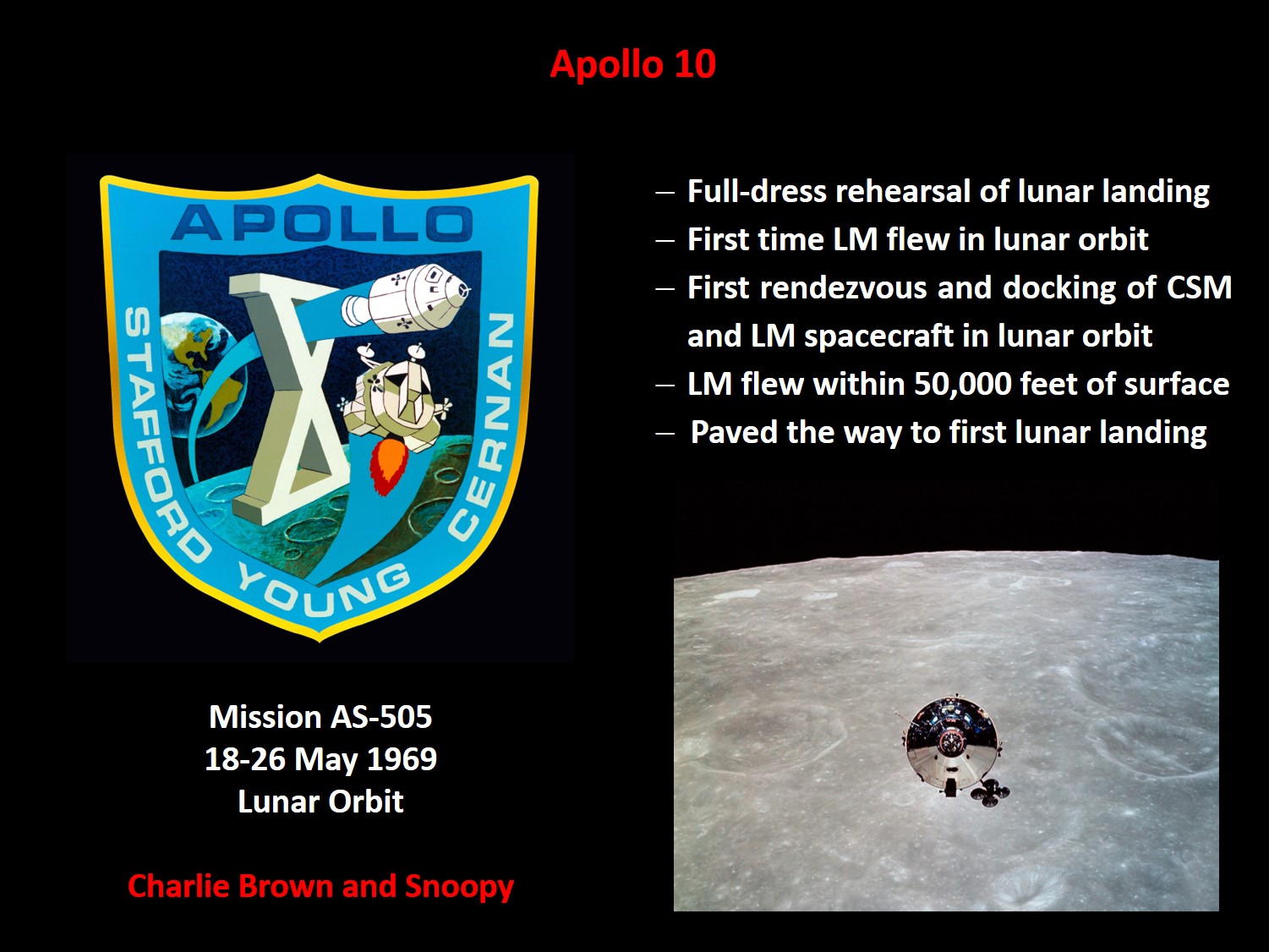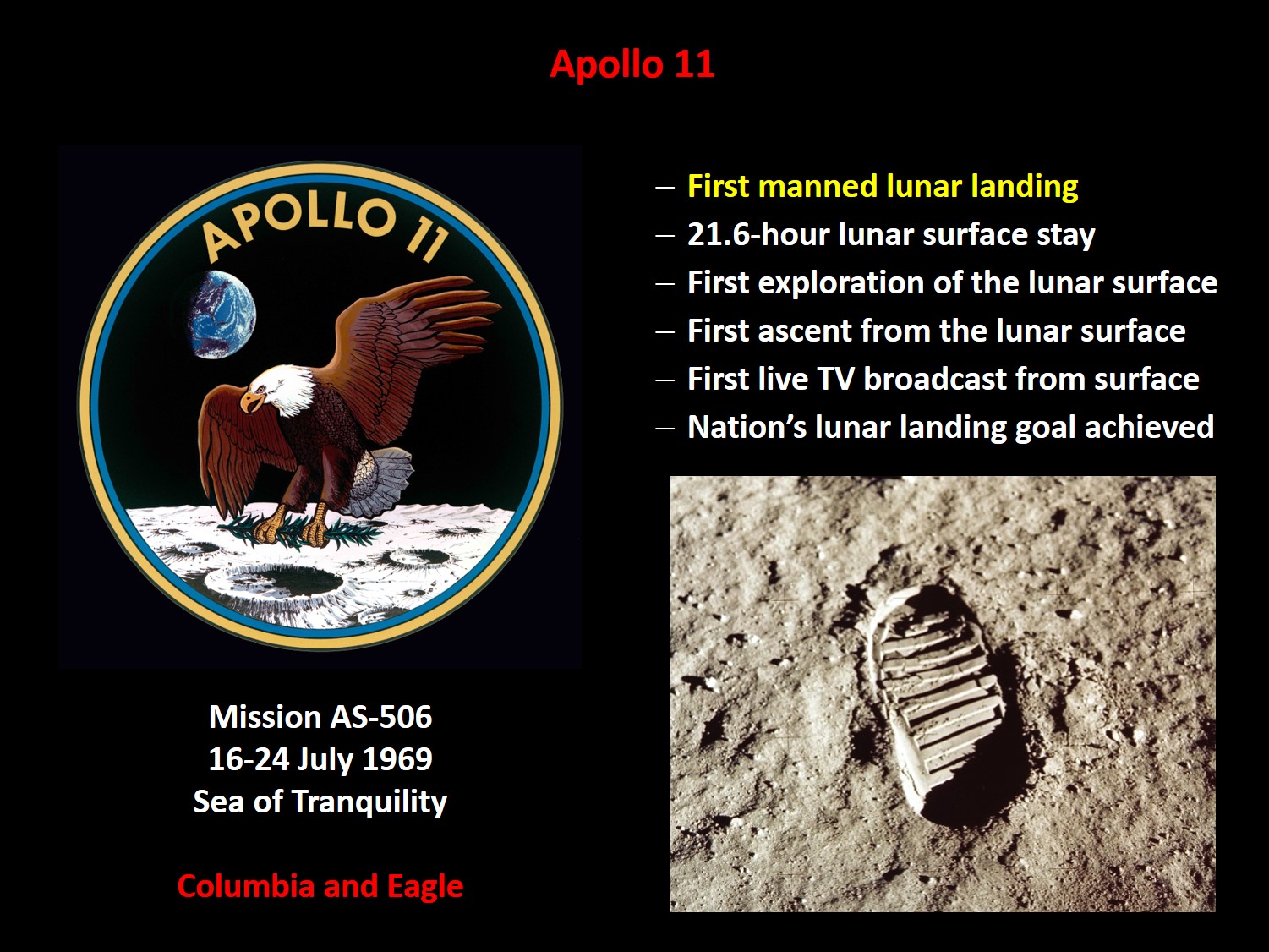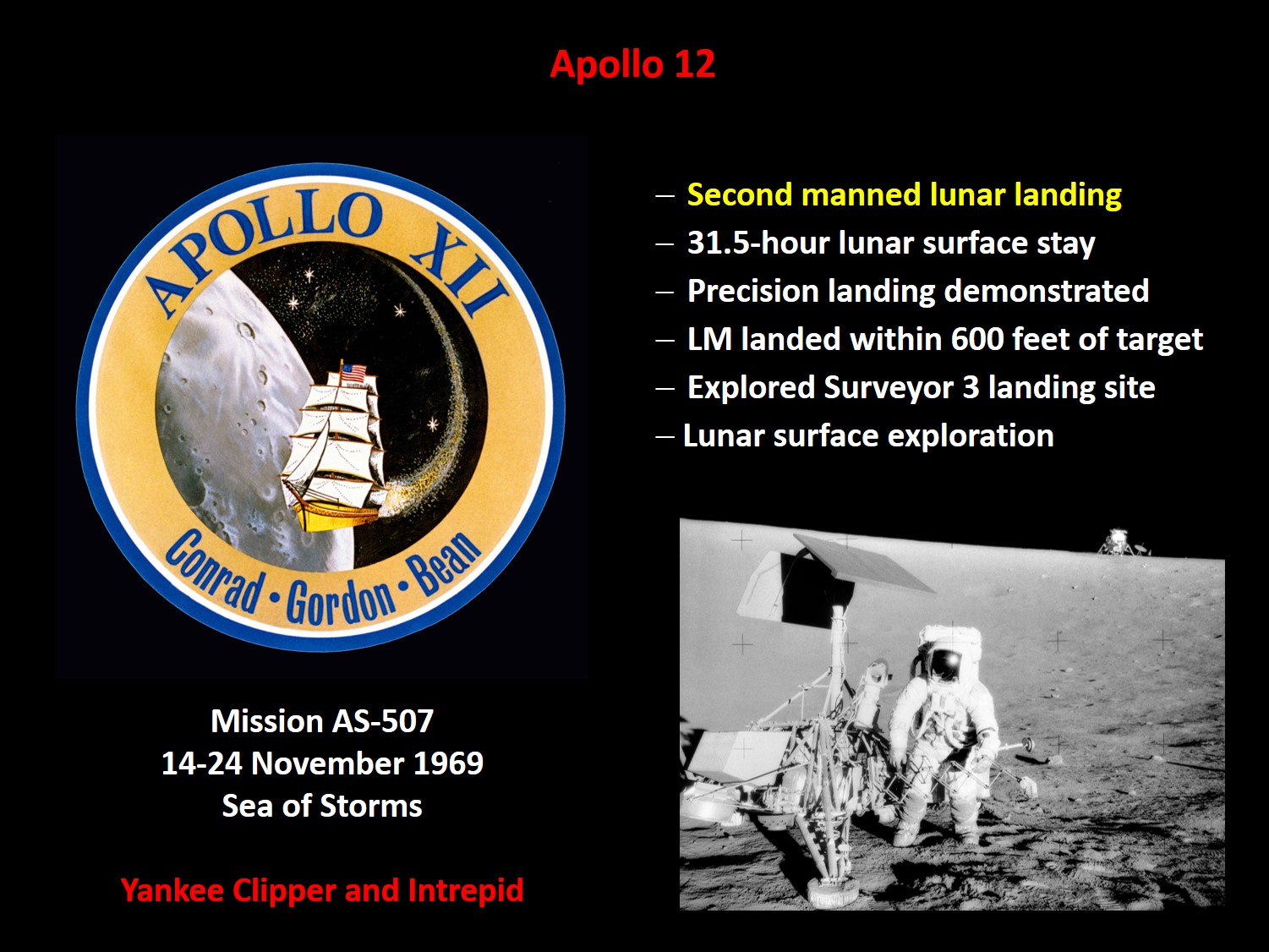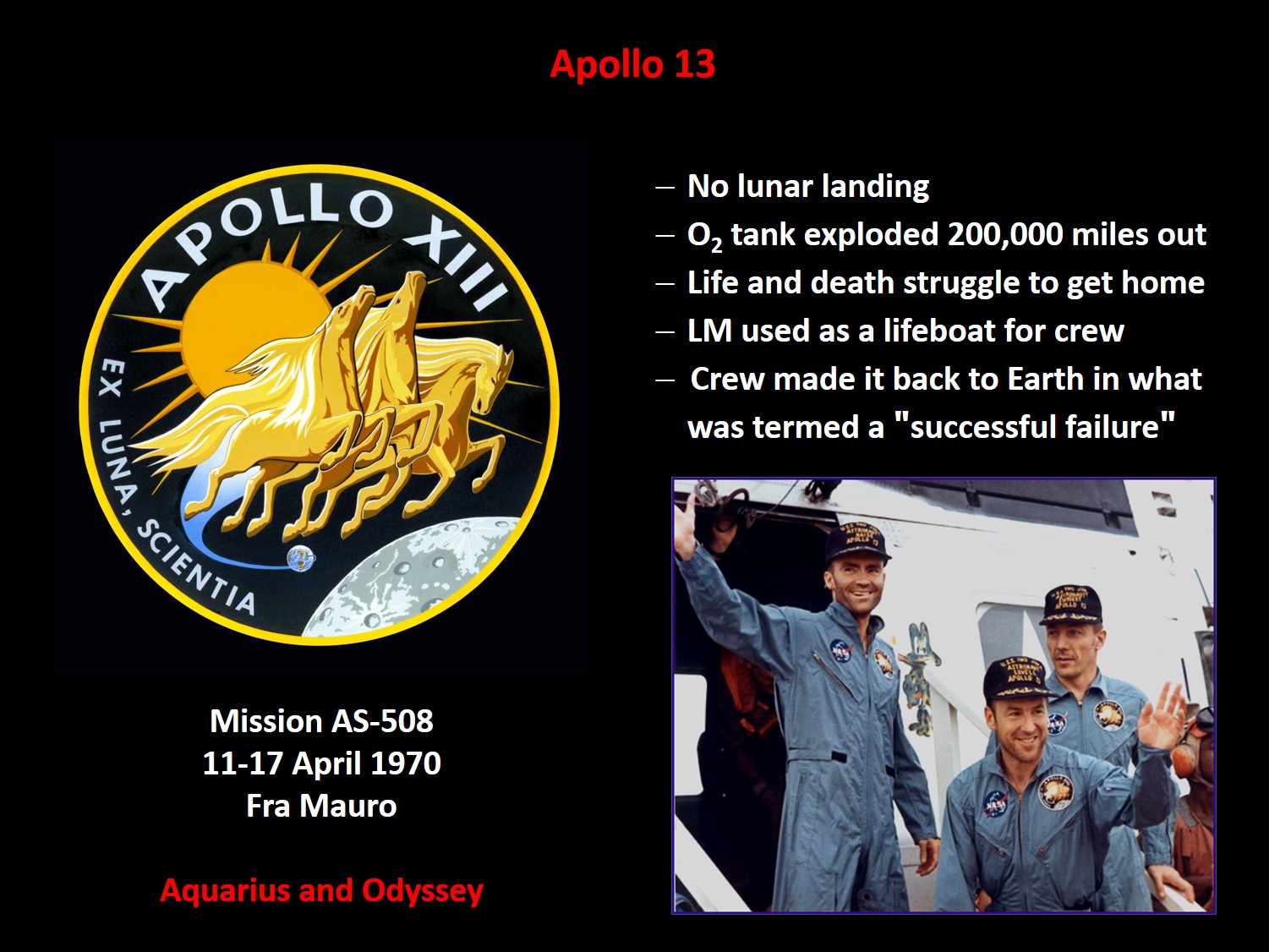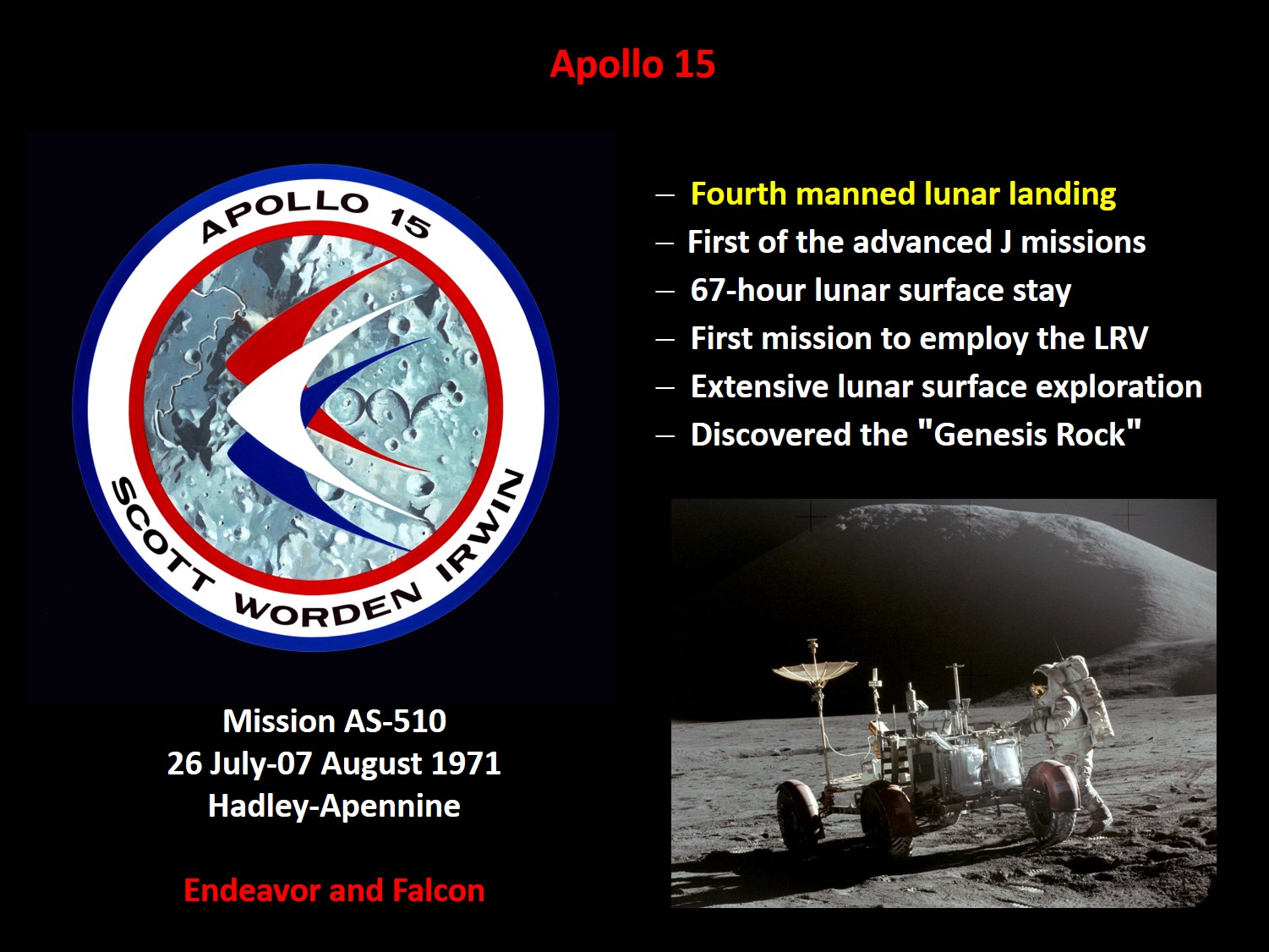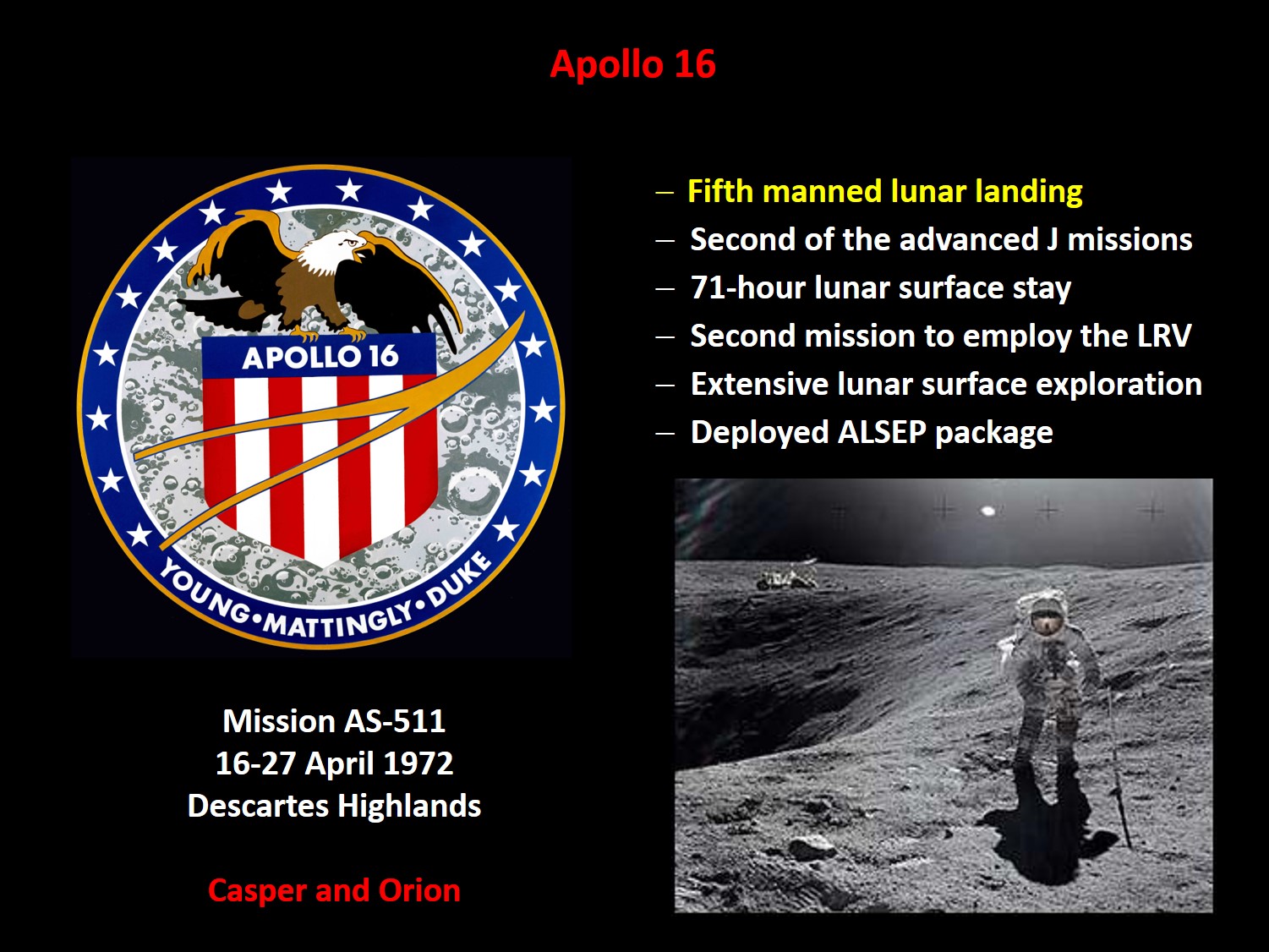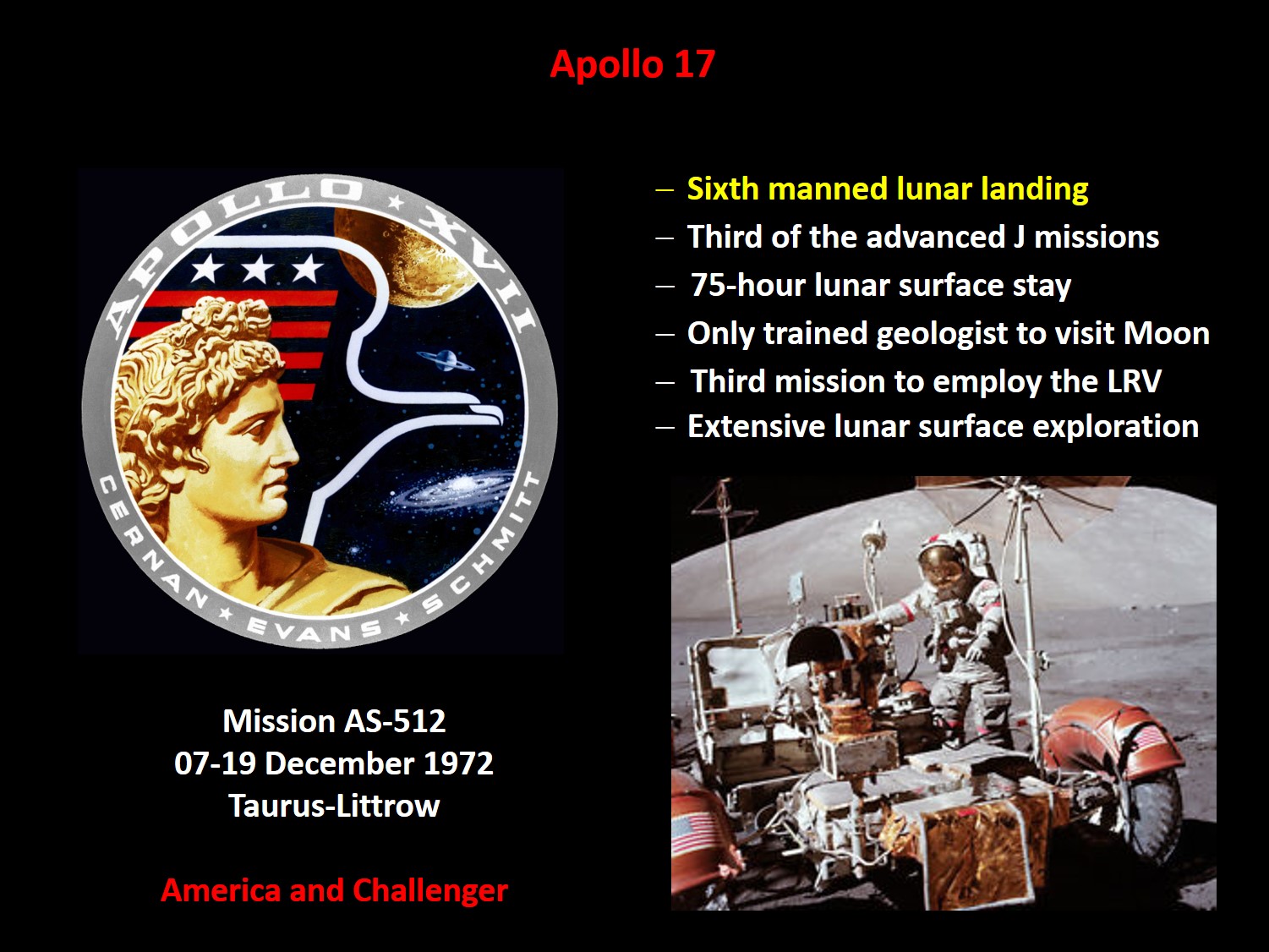Make Your Career Soar
Make Your Career Soar
On Sunday, 20 July 1969, men from the planet earth first set foot upon the moon. Four days later, the crew of Apollo 11 safely returned to their home planet. In doing so, our nation’s daunting moon landing goal was achieved before the end of the 1960’s. In commemoration of this never-to-be-forgotten event, White Eagle Aerospace presents Apollo Remembered as a public service to the community of Tucson, Arizona. Please join us for a compelling and memorable look back at one of the most monumental achievements in the annals of human history.
Apollo Remembered is an exciting 70-minute audio-visual presentation narrated by aerospace historian J. Terry White. Audience members are invited to participate in a Q&A session immediately following the presentation. An informative and entertaining display highlighting the people and times of Apollo is also provided for the enjoyment of those in attendance. Please click the Schedule tab for a listing of presentation dates, times, and locations in the Tucson area. In addition, learn more about the journey, vehicles, astronauts, and missions of Project Apollo by clicking on the respective tabs provided above.
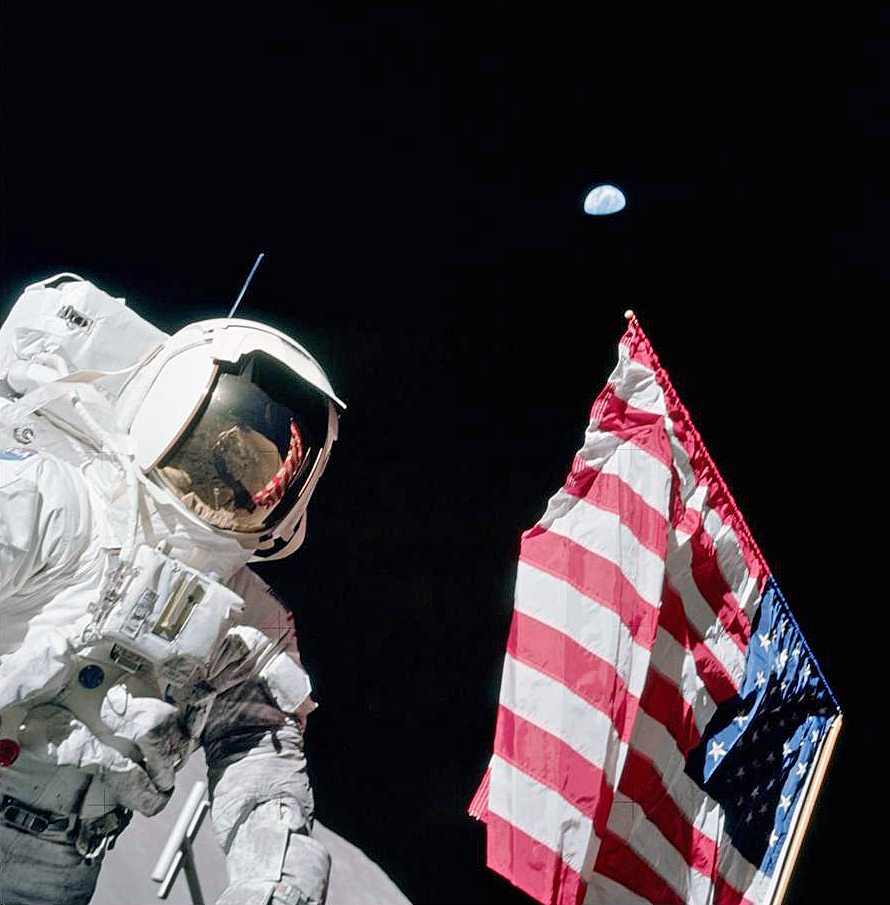
Apollo Remembered is currently scheduled to be presented at 11 separate venues located throughout the greater Tucson area during 2019, including 7 opportunities open to the general public. Presentation dates, times, and locations are listed below. Click on the date to view our Facebook event page for each presentation. Please continue to check back periodically as changes to the presentation schedule can occur unexpectedly. This presentation schedule was last revised on Tuesday, 09 July 2019.
Saturday, 22 June 2019 ⇒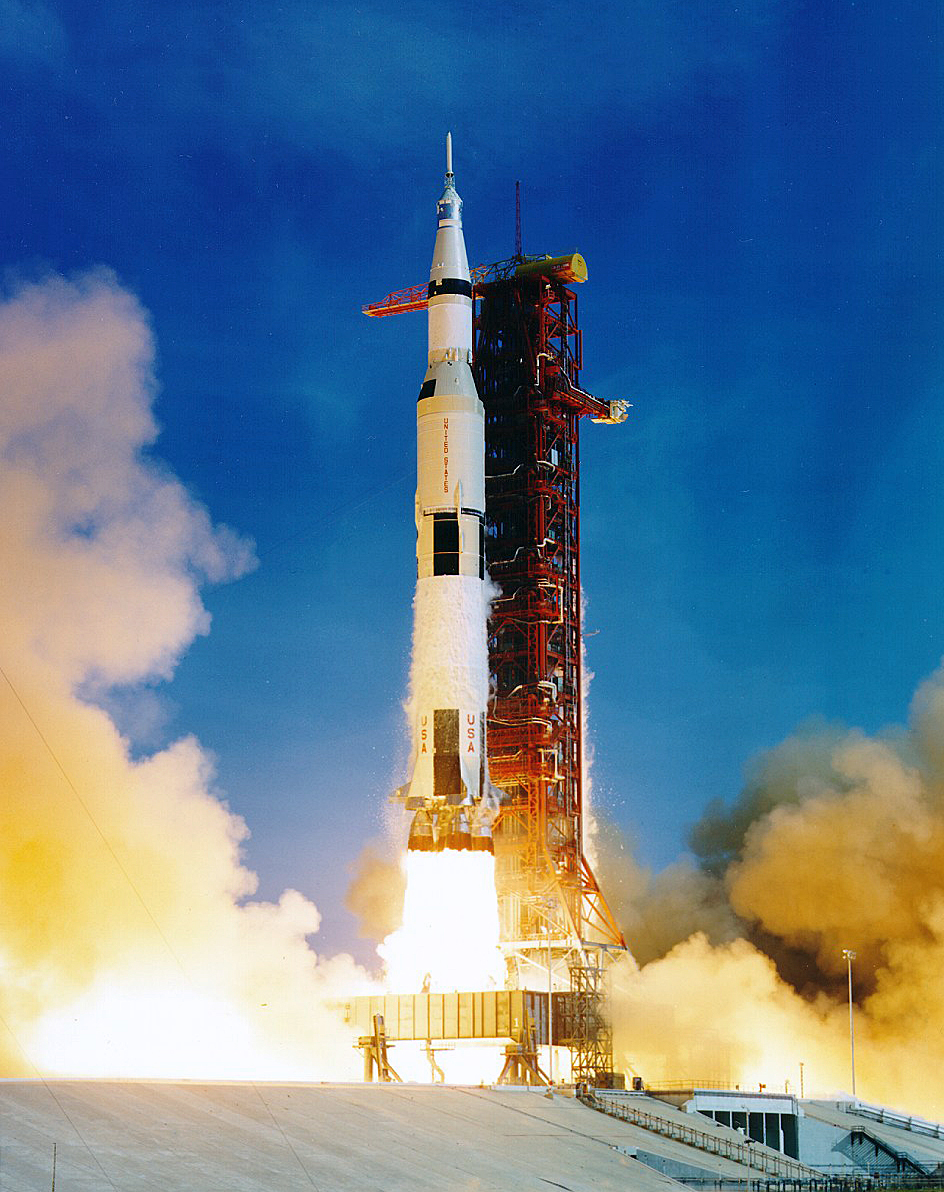
Presentation Begins at 6:00 pm
Pima Air and Space Museum, Hangar 1
6000 East Valencia Road
Attendance Capacity: 300
*PASM admission fee required
Friday, 28 June 2019 ⇒
Presentation begins at 6:30 pm
The Church of Jesus Christ of Latter-day Saints
Fairmount Building
6150 East Fairmount Street
Attendance Capacity: 150
Saturday, 20 July 2019 ⇒
Presentation begins at 6:30 pm
The Church of Jesus Christ of Latter-day Saints
Tucson North Stake Center
939 West Chapala Drive
Attendance Capacity: 150
Friday, 23 August 2019 ⇒
Presentation begins at 6:30 pm
The Church of Jesus Christ of Latter-day Saints
Sierra Vista Stake Center
2100 E Yaqui Street, Sierra Vista
Attendance Capacity: 150
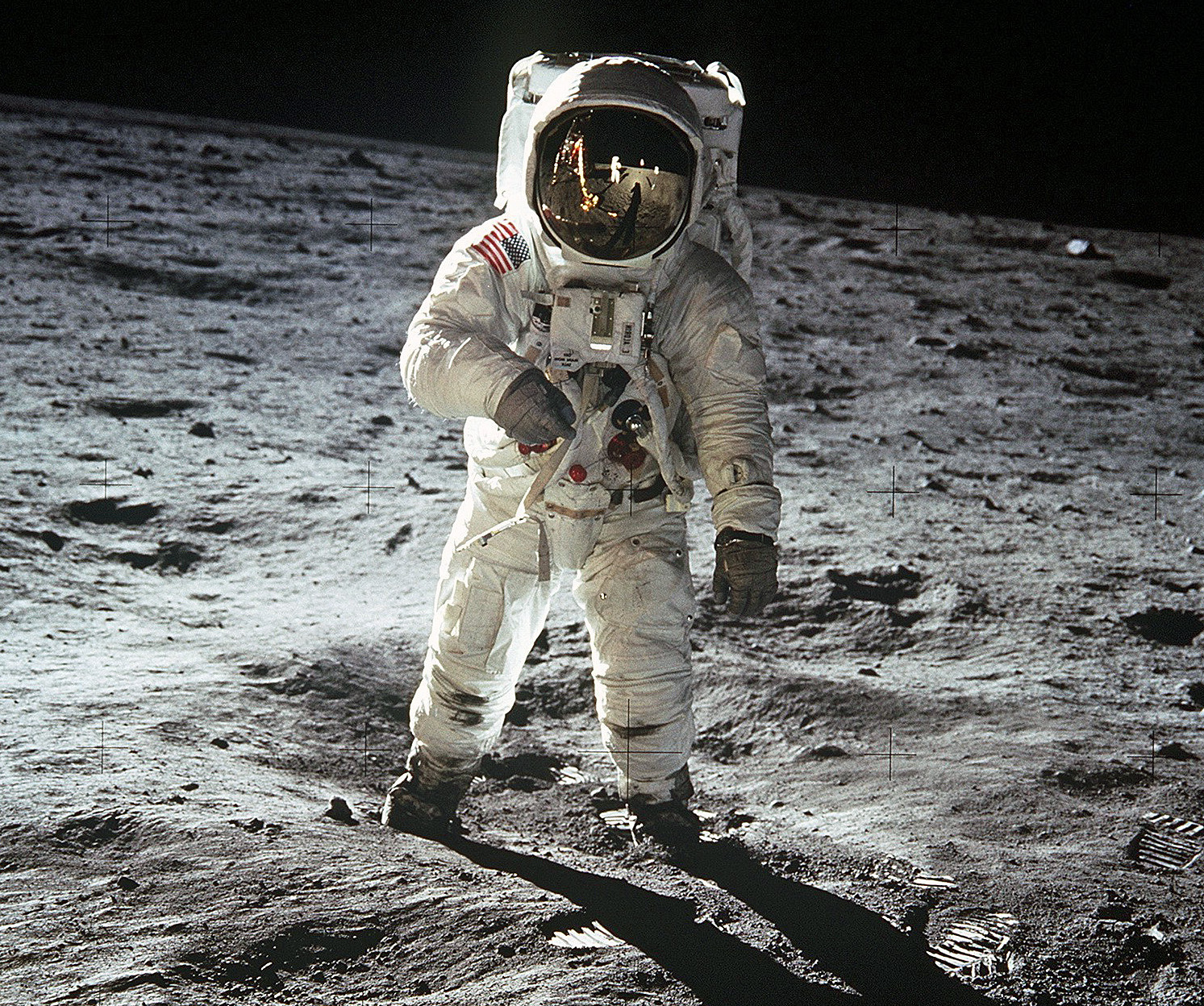
Rescheduled: Now Tuesday, 05 November 2019 ⇒
Presentation begins at 2:00 pm
Murphy-Wilmot Public Library
530 North Wilmot Road
Attendance Capacity: 100
Tuesday, 15 October 2019 ⇒
Presentation begins at 4:30 pm
Oro Valley Public Library
1305 West Naranja Drive
Attendance Capacity: 100
Wednesday, 30 October 2019 ⇒
Presentation begins at 1:00 pm
Joyner-Green Valley Public Library
601 North La Cañada Drive, Green Valley
Attendance Capacity: 100
Apollo Remembered presentations will also be
privately hosted by the following organizations: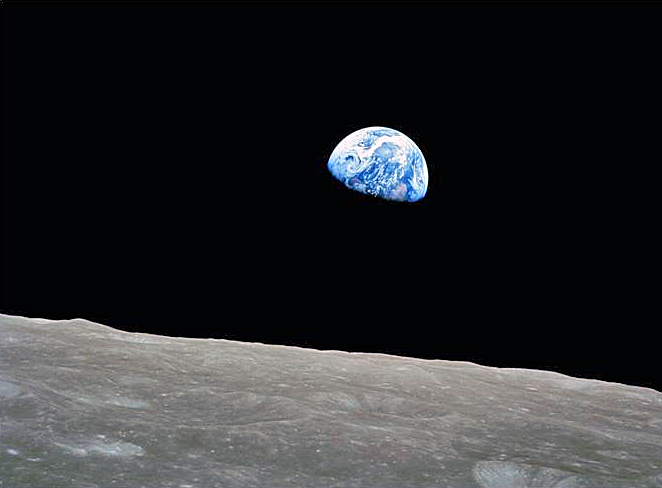
The Church of Jesus Christ of Latter-day Saints
— Marana Arizona Stake; July 2019
Sun City Oro Valley Retirement Community
— August 2019
The Church of Jesus Christ of Latter-day Saints
— Tucson Arizona West Stake; September 2019
University of Arizona AIAA Student Branch
— September 2019
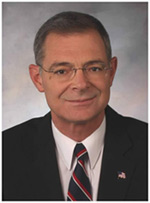
J. Terry White is the founder, senior advisor and former president of White Eagle Aerospace. His 50 years of professional aerospace experience includes the NASA Space Shuttle Program, NASA X-43A Flight Research Project, and the United States Navy STANDARD Missile Program. During his far-ranging professional career, Terry has served on the engineering technical staff of Rockwell International, General Dynamics Corporation, Hughes Missile Systems Company, NASA Dryden Flight Research Center and Raytheon Missile Systems. In addition, he has served as an engineering consultant to numerous corporate and private aerospace enterprises.
Terry is a subject matter technical expert in the disciplines of aerodynamics, 6-DOF aerodynamics models, aerothermodynamics, hypersonics, flight simulation, and flight testing.
Terry previously served as manager of the Aerodynamics Department in the Guidance, Navigation, and Control Center at Raytheon Missile Systems in Tucson, Arizona. In this capacity, he was responsible for all aerodynamics work performed at the world’s largest tactical missile producer. He concluded his career with Raytheon in 2010 as a Senior Engineering Fellow in Aerodynamics.
Terry has authored more than 180 technical papers on a wide variety of aero-science and aerospace subjects. His teaching credentials include 15 years as an instructor in the Aerospace Engineering Department of the California State Polytechnic University, Pomona, 10 years as an instructor in the professional development program at Raytheon and 17 years developing and teaching technical courses at White Eagle Aerospace. Those who have taken Terry’s courses say that he brings an extensive technical knowledge and uncommon instructional skill to the training environment.
Terry is particularly well-known for his inspiring aerospace history presentations, which are intense, technically relevant reviews of significant events in United States aerospace history. He has lectured extensively on aerospace history topics at the USAF Test Pilot School, the Society of Experimental Test Pilots, the National Aeronautics and Space Administration, the American Institute of Aeronautics and Astronautics, academia and industry.
Terry and his wife Phyllis reside in Oro Valley, Arizona. They are the happy parents of five remarkable children and the grateful grandparents of nine delightful grandchildren.
One of the many technical aspects that has to be considered when making a lunar journey is that the earth is orbiting around the sun while the moon is in orbit about the earth. The average distance between the earth and the moon is roughly 239,000 miles and it takes about three (3) days to make the trip. Since the moon is continuously moving along its orbit, a spacecraft from earth has to follow a flight path that allows it to arrive at the point in space where the moon will be 3 days after launch. This is somewhat akin to a marksman hitting a moving target by aiming at a point slightly ahead of its oncoming path. In the case of a flight to the moon, the tolerance for error is very small. Indeed, Apollo spacecraft were aimed at a point a mere 60 miles ahead of the oncoming moon.
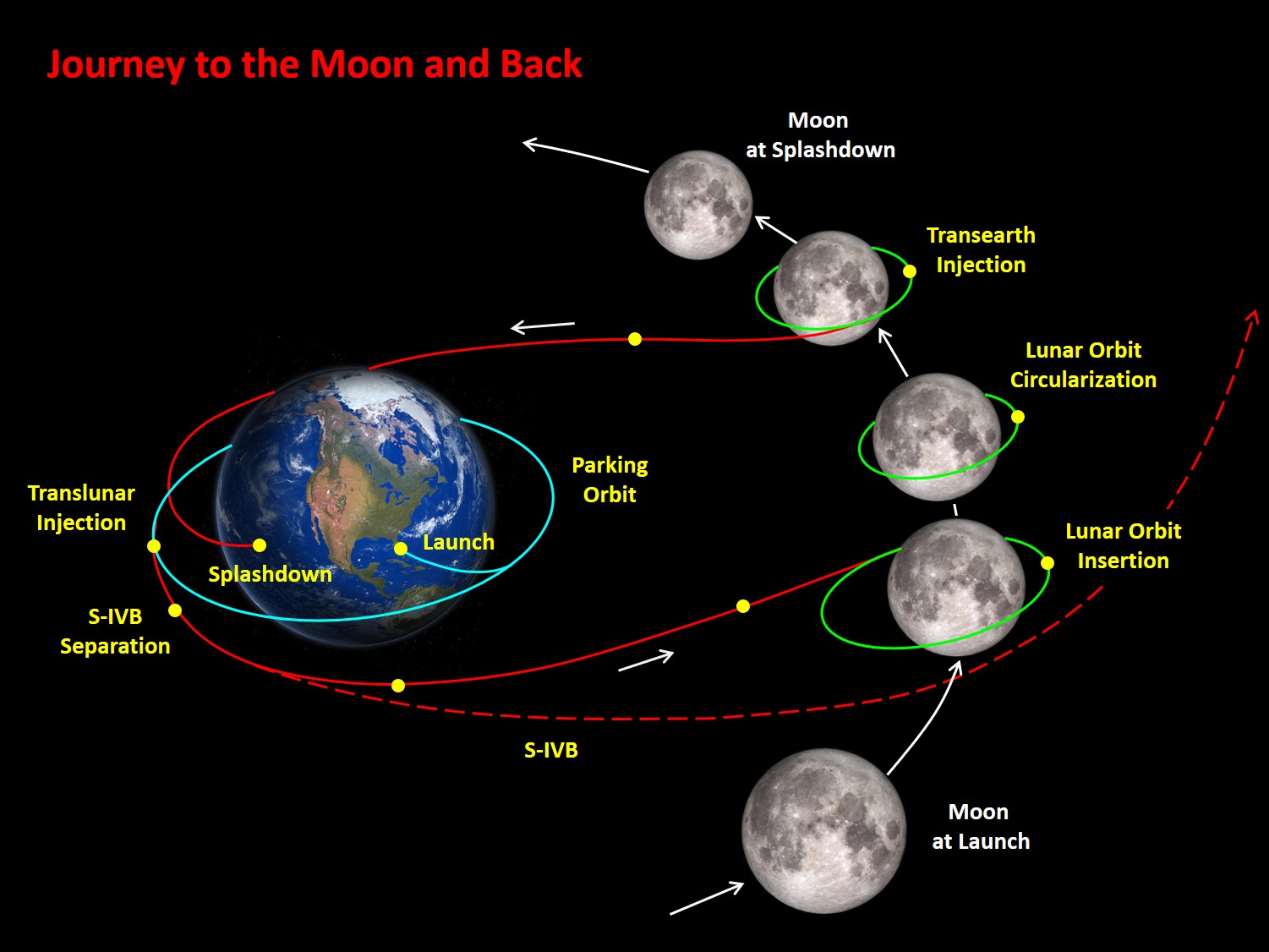
The graphic above highlights the main features of a spaceflight from the earth to the moon and back. It is very similar to the flight profile of the Apollo 8 mission flown in December of 1968. Parenthetically, Apollo 8 was the first time that astronauts left the gravitational well of the earth and flew to the moon. In many ways, it incurred the highest risk of any manned lunar mission ever flown. Without a successful Apollo 8 mission, a manned lunar landing would not have occurred in the 1960’s.
As illustrated above, a journey to the moon begins with launch from the earth and insertion into a circular parking orbit. Less than two orbits later, the spacecraft is rocketed out of earth orbit to head to the moon. This event is called Translunar Injection (TLI). The purpose of TLI is to accelerate the spacecraft to a velocity sufficient for the vehicle to climb out of the gravitational well of the earth and have enough energy to get to the moon. This velocity is about 24,500 mph. Following a 3-day journey, the spacecraft is inserted into an orbit about the moon. An onboard rocket motor is fired while the vehicle is on the backside of the lunar globe. Its purpose is to provide enough deceleration to allow the moon’s gravitational attraction to capture the spacecraft in lunar orbit.
Once lunar orbital operations are completed, the spacecraft fires its rocket motor to accelerate out of lunar orbit. This flight event is called Transearth Injection (TEI). The velocity required to climb out of the moon’s gravitational well is around 5,300 mph. The trip back to earth typically takes about 2.5 days. This is less than the duration of the outbound trip because the earth’s gravitational attraction is about 6 times higher than that of the moon. As was the case on the outbound journey, course corrections are made as required in order to keep the spacecraft on the proper flight path.
Entry into the earth’s atmosphere occurs at a velocity of about 24,500 mph. As the entry vehicle plunges deeper into the atmospheric, drag forces rapidly build up and cause the craft to lose velocity. The resultant deceleration loads on vehicle and crew can exceed 10 times the force of gravity for short periods. In addition, vehicle external surface temperatures build up during entry, with peak surface temperatures approaching 5,000 F. Moreover, temperatures in the shock layer surrounding the vehicle can be almost four times as high. At an altitude of 24,000 feet, a pair of 16.5-foot diameter drogue parachutes (in the case of the Apollo command module) are deployed to stabilize the spacecraft in preparation for main parachute deployment which occurs at an altitude of 10,000 feet. The three (3) main parachutes, each 84 feet in diameter (again, per Apollo), allow the spacecraft and its crew to splashdown in the ocean at about 22 mph. Recovery forces on-station then recover spacecraft and crew to the safety of an awaiting recovery ship.
It all began on Friday, 25 May 1961, when President John F. Kennedy addressed a special session of the United States Congress. His message was entitled Urgent National Needs. The President spoke on nine (9) separate topics, the last of which was simply entitled Space. It was within this portion of his speech that President Kennedy proposed “that this nation should commit itself to achieving the goal, before this decade is out, of landing a man on the moon and returning him safely to the earth.” The nation enthusiastically, if not confidently, accepted that challenging goal. While it would take 2,978 days from the day of President Kennedy’s clarion call, history records that men from earth indeed walked on the surface of the moon and returned safely before the end of the 1960’s.
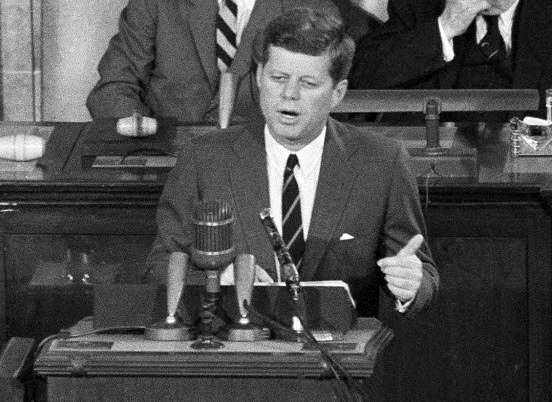
At the time that President Kennedy proposed the moon landing goal in May of 1961, the United States had accumulated all of about 15 minutes of manned spaceflight experience! This meager accumulation of flight time was courtesy of the suborbital spaceflight of NASA astronaut Alan Bartlett Shepard, Jr. (pictured below) aboard his Freedom 7 Mercury spacecraft. On 05 May 1961, the diminutive space vehicle and its brave pilot were lofted a mere 302.8 miles downrange and 116.5 miles in altitude by a modified United States Army Redstone booster. Other than that, there were no proven technologies, methods, procedures, nor hardware in existence at the time which would allow the United States to get to the moon. However, time, ingenuity, effort, and necessity would eventually change all of that. Challenging, but stirring days lay ahead!
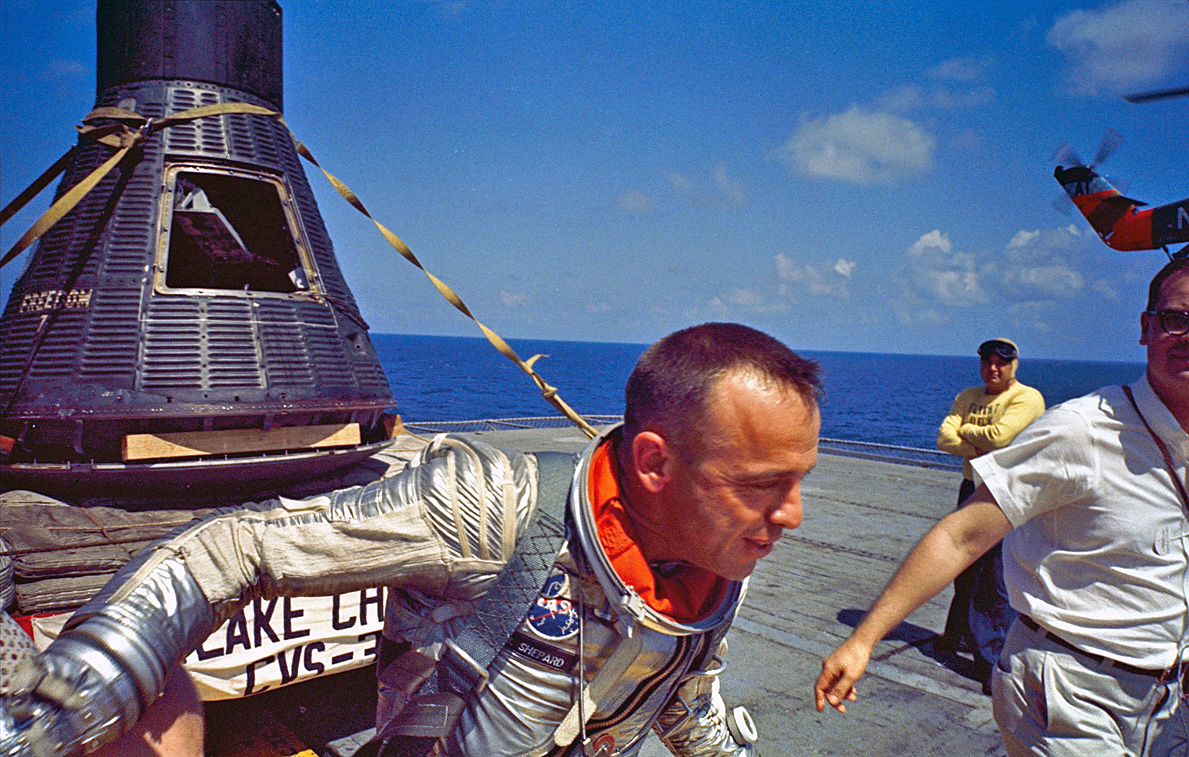
The method ultimately chosen to get to, land on, and return from the moon was called Lunar Orbit Rendezvous (LOR). This approach involved launching a two-part space vehicle that weighed about 100,000 lbs (50 tons). It consisted of an orbiter and a lander. The orbiter was called the Command Service Module (CSM). Note that the CSM was a combination of the Command Module (CM) and Service Module (SM). The lunar lander was known as the Lunar Module (LM). It was a two-stage vehicle consisting of a descent stage and an ascent stage. A very large booster was needed to lift the entire payload out of the earth’s gravitational well and arrive at the moon. This booster became known as the Saturn V. (Please click the The Vehicles tab for more information regarding these essential flight hardware elements.) NASA engineer John C. Houbolt (pictured below) was the primary champion of LOR. His strong advocacy of LOR, and perseverance in the face of stiff resistance from many of his associates, was pivotal to the ultimate achievement of the national goal to land men on the moon before the end of the 1960’s.
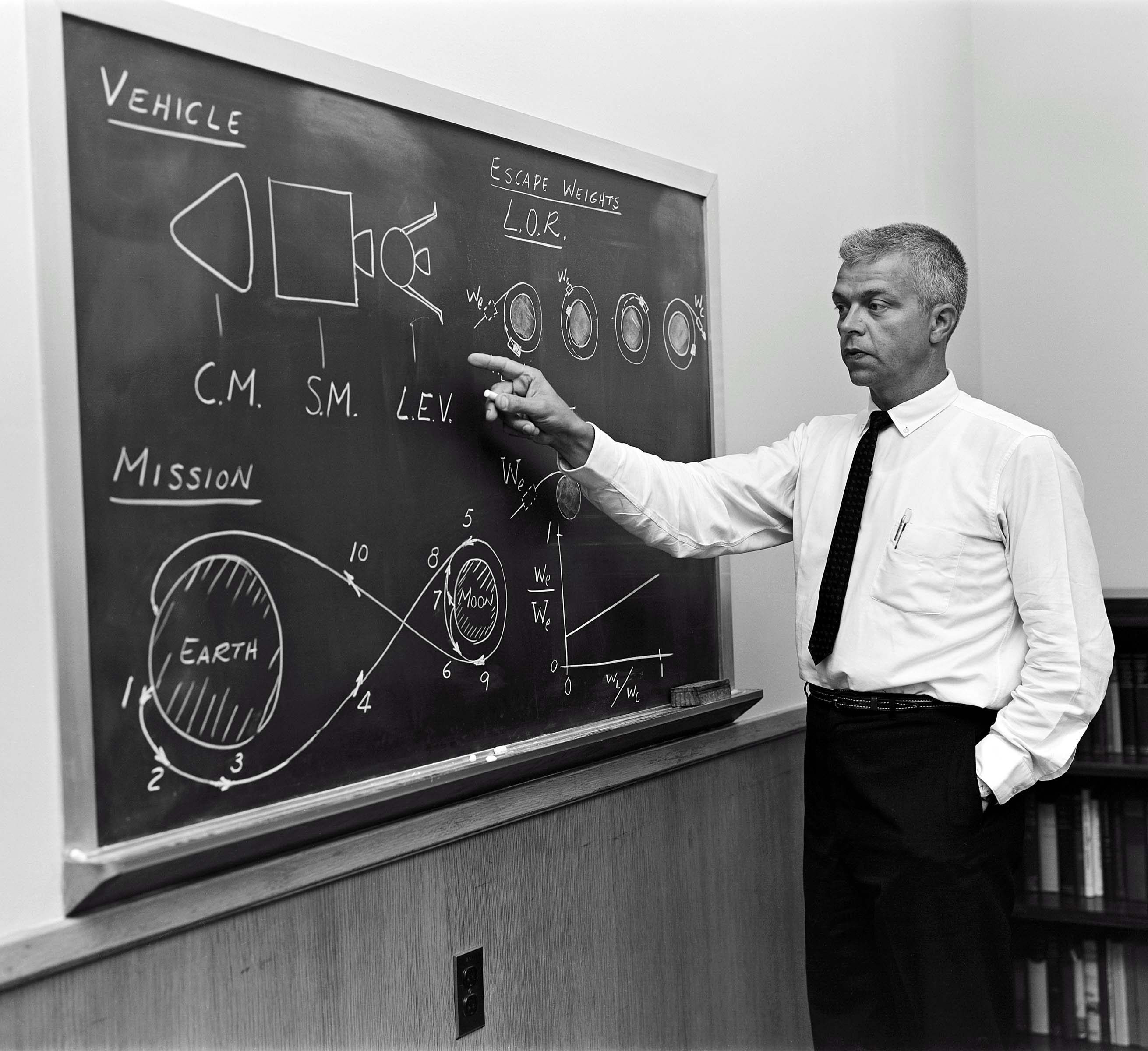
In the LOR concept, the combined CSM and LM would enter lunar orbit after a 72 hour trip from the earth. The crew consisted of three (3) astronauts. While one astronaut would remain with the CSM in lunar orbit, the other two astronauts would transfer to the LM, undock from the CSM, and ultimately land on the moon. After exploring the lunar surface, the two moon explorers would launch back into lunar orbit aboard the ascent stage of the LM. This spacecraft element would then rendezvous and dock with the still-orbiting CSM. (Hence, lunar orbit rendezvous.) The lunar explorers and their cargo would then transfer back into the CSM. Later, the three crew members would blast out of lunar orbit and return to earth. Just prior to reentry, the SM would be jettisoned. The crew then made a hypersonic reentry back into the earth’s atmosphere aboard the CM. Indeed, it was the only part of the entire vehicle that left earth which would return back home.
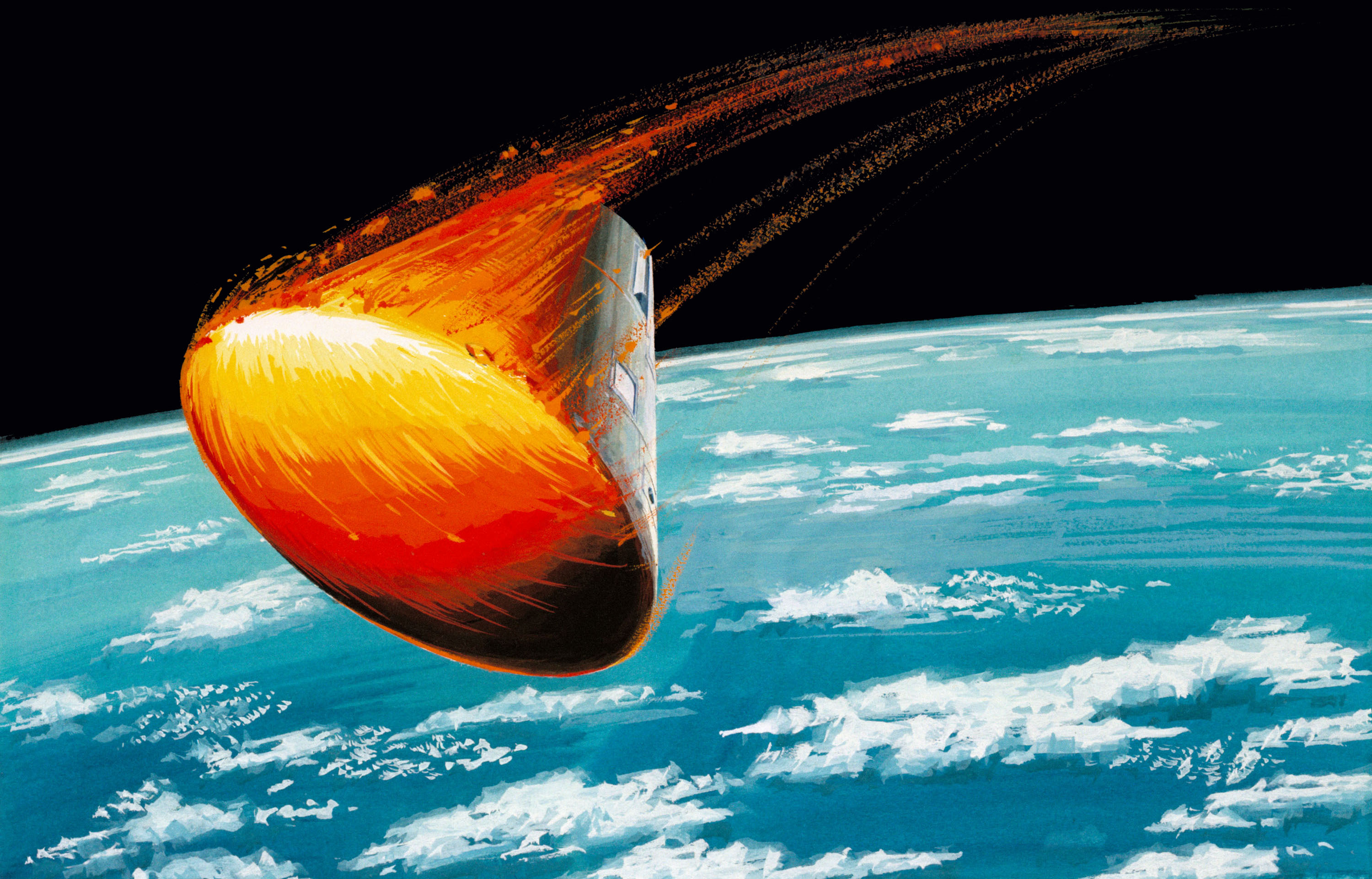
The journey of Apollo 11 began with launch from Pad 39A at the Kennedy Space Center and boost into a 100 nm parking orbit about the earth. After all onboard systems checked out satisfactorily, the Saturn V’s third stage sent the Apollo spacecraft out of earth orbit and into translunar space. The outbound trip to the moon took about 73 hours. The Lunar Module Eagle successfully landed on the Sea of Tranquility some 27 hours later. After almost 22 hours on the lunar surface, Neil Armstrong and Buzz Aldrin lifted-off from the moon to rejoin Michael Collins in lunar orbit. Collins had continued to orbit the moon alone in the Command Module Columbia while Armstrong and Aldrin were on the lunar surface. Following 60 hours in lunar orbit, the Apollo 11 crew fired their Service Propulsion System (SPS) to leave lunar orbit and head back to earth. The trip home was largely uneventful and took about 60 hours. The epic journey to the moon and back ended with splashdown in the Pacific Ocean. Mission total elapsed time was 195 hours, 18 minutes, and 35 seconds.


The Saturn V was the largest launch vehicle ever flown. The 3-stage behemoth was 58 feet taller than the fabled Statue of Liberty and weighed 13 times as much. The primary mission of the Saturn V was to propel the Apollo spacecraft to the moon. The Apollo spacecraft, consisting of the Command Module, Service Module, and Lunar Module, weighed roughly 100,000 pounds (50 tons).
The first stage (S-IC) of the Saturn V burned kerosene and liquid oxygen as propellants. The S-IC generated more than 7.5 million pounds of lift-off thrust and burned propellants at a rate of 28,000 pounds (14 tons) per second. As a result, in 2.8 minutes of first stage flight, more than a half million gallons of propellants were consumed by the mighty Saturn V’s quintet of F1 liquid rocket engines.
The second stage (S-II) and third stage (S-IVB) of the Saturn V burned liquid hydrogen and liquid oxygen as propellants. S-II thrust was on the order of one million pounds while that of the S-IVB was 230,000 pounds. Both stages used the highly reliable J-2 liquid rocket engine.
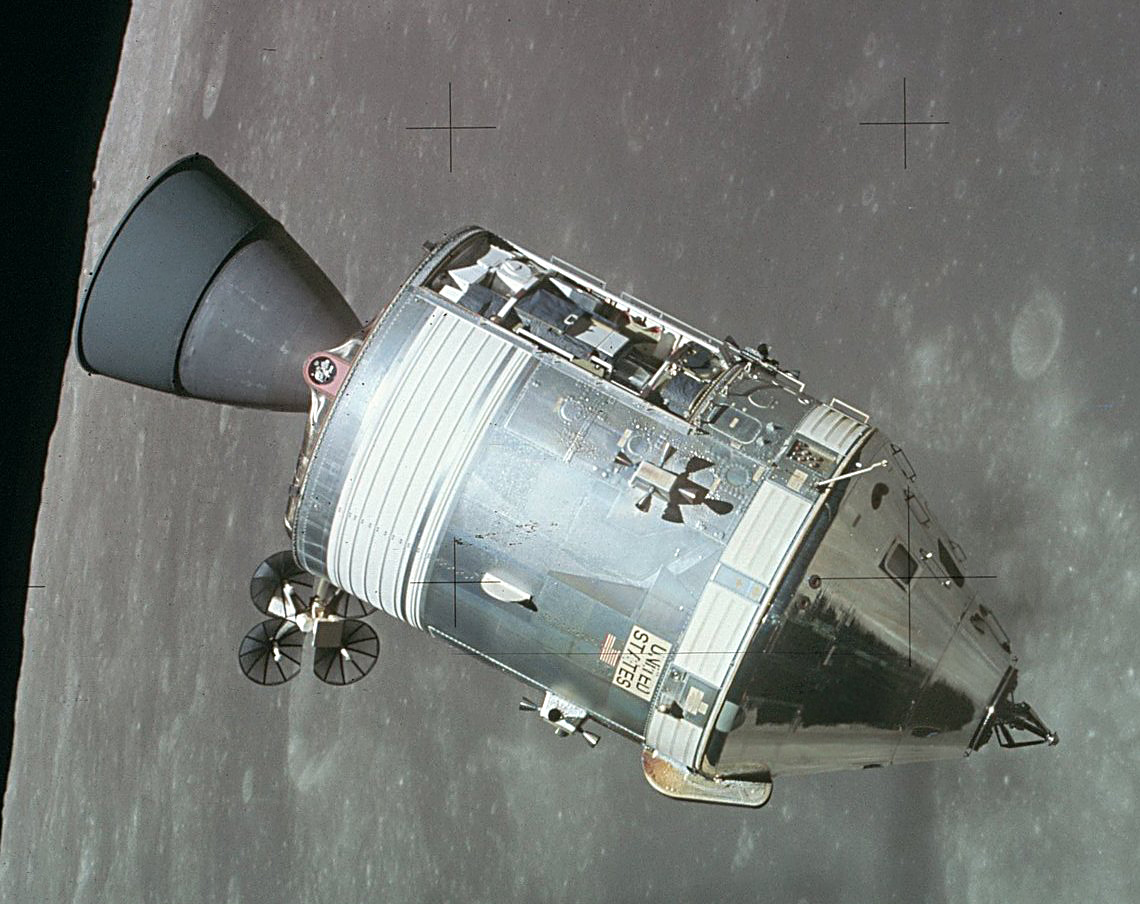
The Command Service Module (CSM) served as the primary command post for the crew during spaceflight. The conical portion was known as the Command Module (CM). It weighed 12,900 pounds at lift-off and contained all of the guidance, control, and navigation functions required for spaceflight. The CM housed the crew and included communication and life support systems as well as an attitude control system. The cylindrical portion of the spacecraft was known as the Service Module (SM). It weighed about 54,000 pounds at lift-off and contained a myriad of systems and consumables including the Service Propulsion System (SPS). The SPS was rated at 20,500 pounds of thrust in vacuum and was extremely reliable.

The Lunar Module (LM) was history’s first true spacecraft in that it was intended to fly only is space where atmospheric effects are absent. With no concern for aerodynamics, designers could focus on weight saving and volumetric efficiency. This explains the rather odd looking shape (for a flight vehicle) characteristic of the LM configuration. The LM weighed somewhere between 33,000 and 36,000 pounds depending on the duration of stay on the lunar surface. It was really a two-stage vehicle. The descent stage was the portion of the LM with the landing gear. It contained a rocket motor that generated 10,000 pounds of thrust in vacuum. The ascent stage was the top portion of the LM. It contained a rocket that generated 3,500 pounds of vacuum thrust. The ascent stage boosted the astronauts back into lunar orbit to meet up with the orbiting CSM.
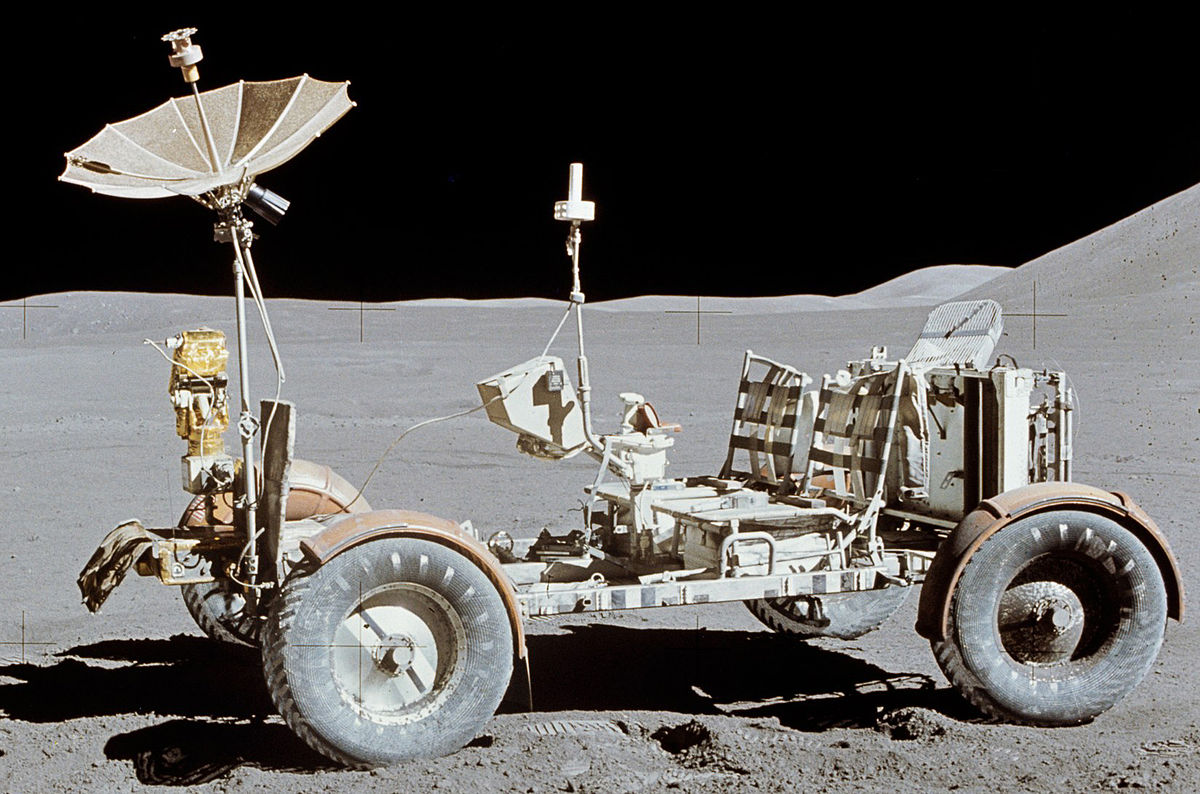
Starting with Apollo 15, astronauts were greatly aided in their exploration of the lunar surface by using the Lunar Roving Vehicle (LRV). Tools, scientific equipment, a TV camera, communications gear, and lunar samples were carried onboard. The vehicle was quite agile and its wheels were of lightweight steel mesh construction. The LRV was carried in the LM descent stage from which it was easily deployed on the moon. Two astronauts rode side-by-side in the LRV. They could drive 5 miles or more from the landing site to retrieve lunar rock samples at locations not easily or safely reached on foot.
A total of twenty-nine (29) astronauts flew eleven (11) Project Apollo missions. Four (4) of the Apollo astronauts flew two (2) missions each Six (6) Apollo spaceflights were lunar landing missions. As a result, twelve (12) Apollo astronauts landed on and explored the lunar surface. Summarized below are the astronaut crews that flew Project Apollo missions:
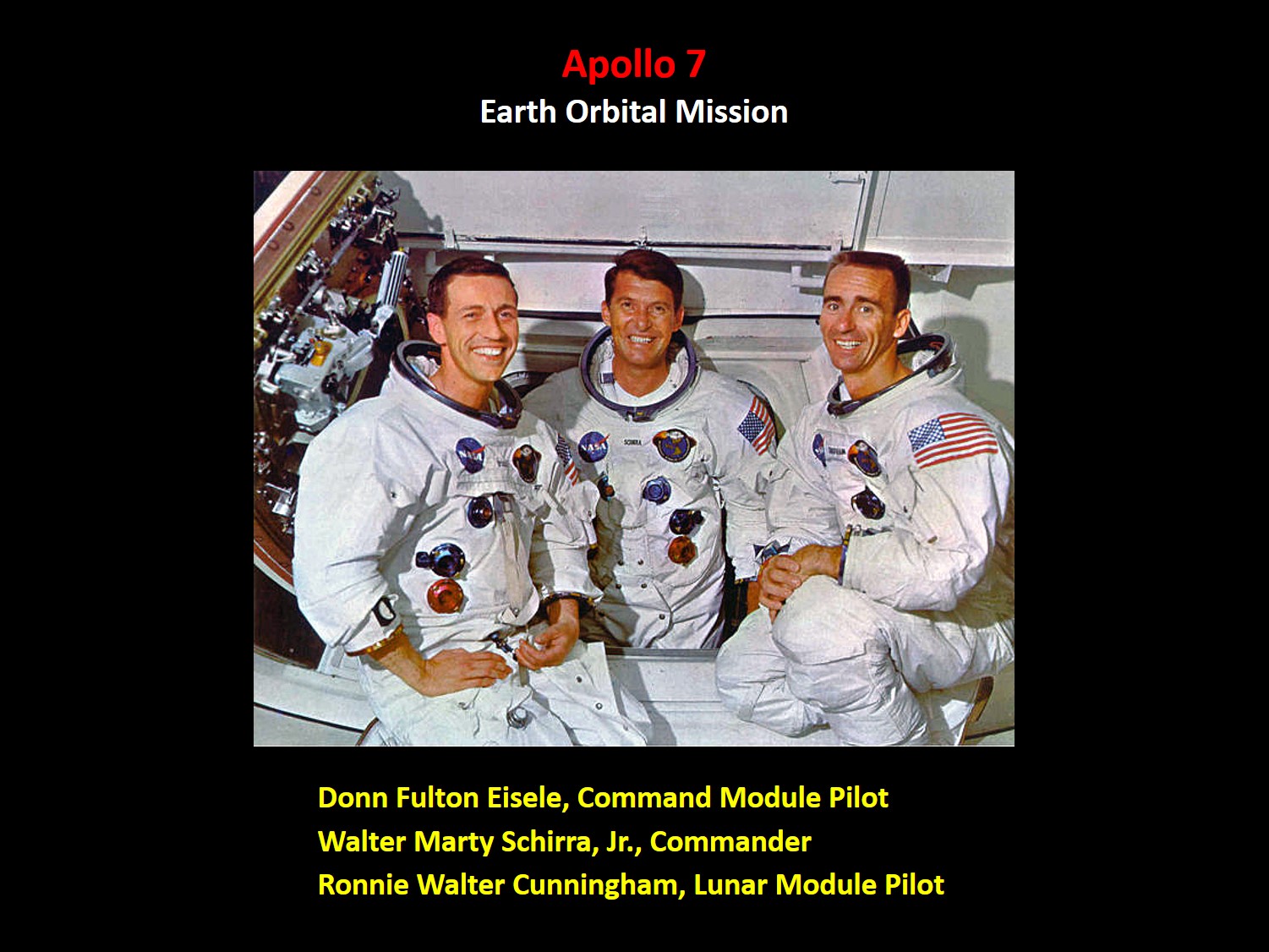
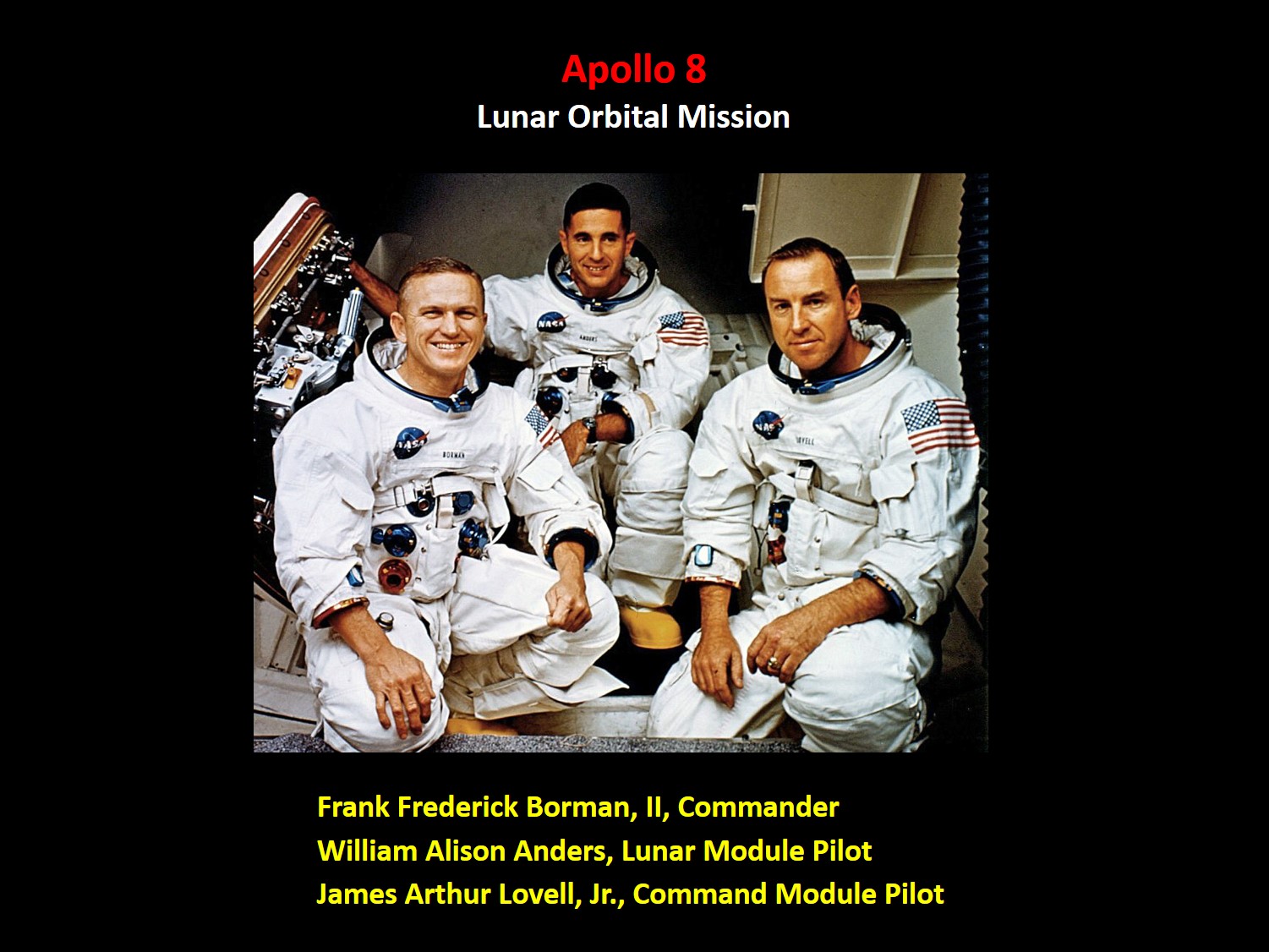
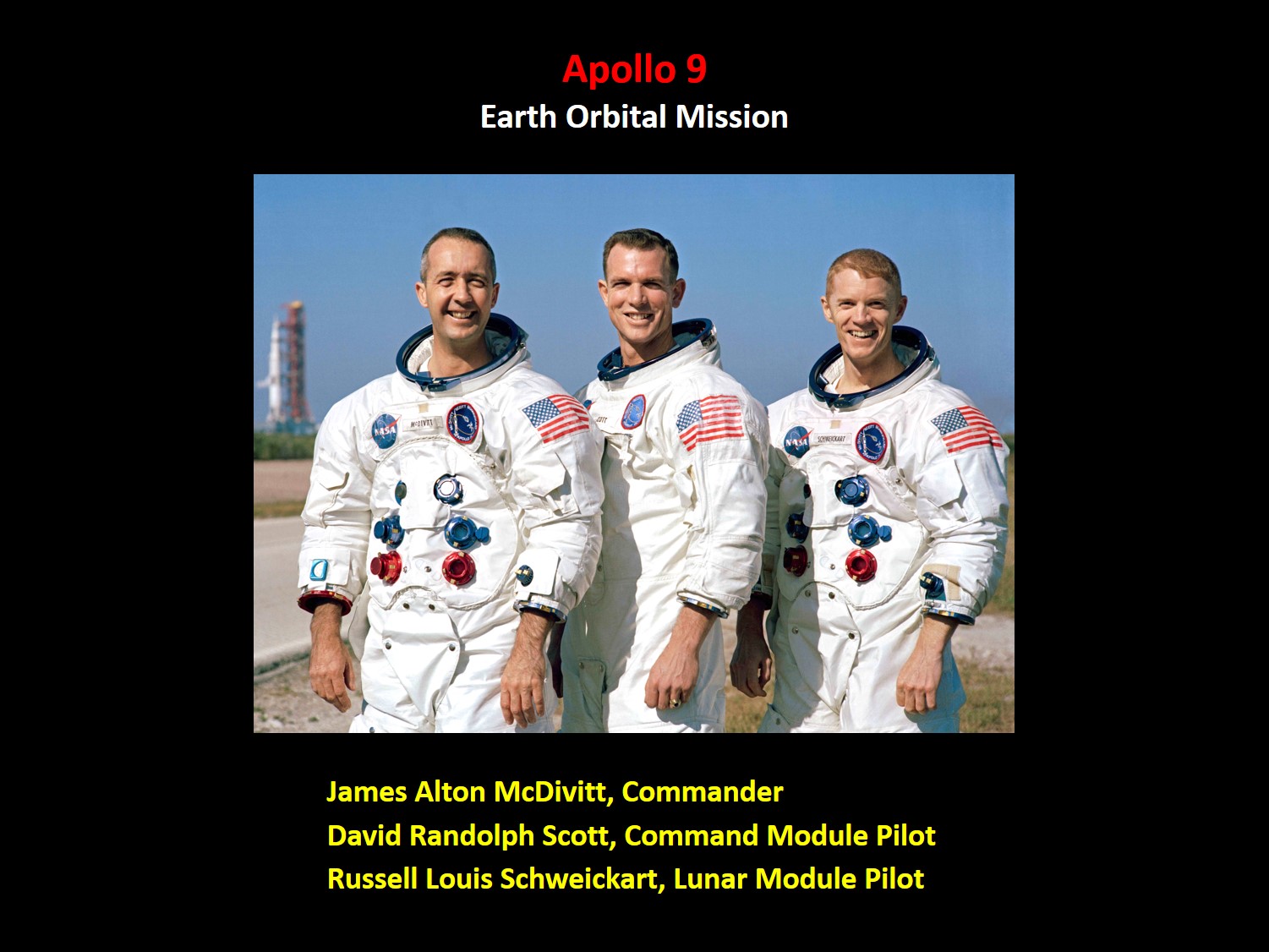
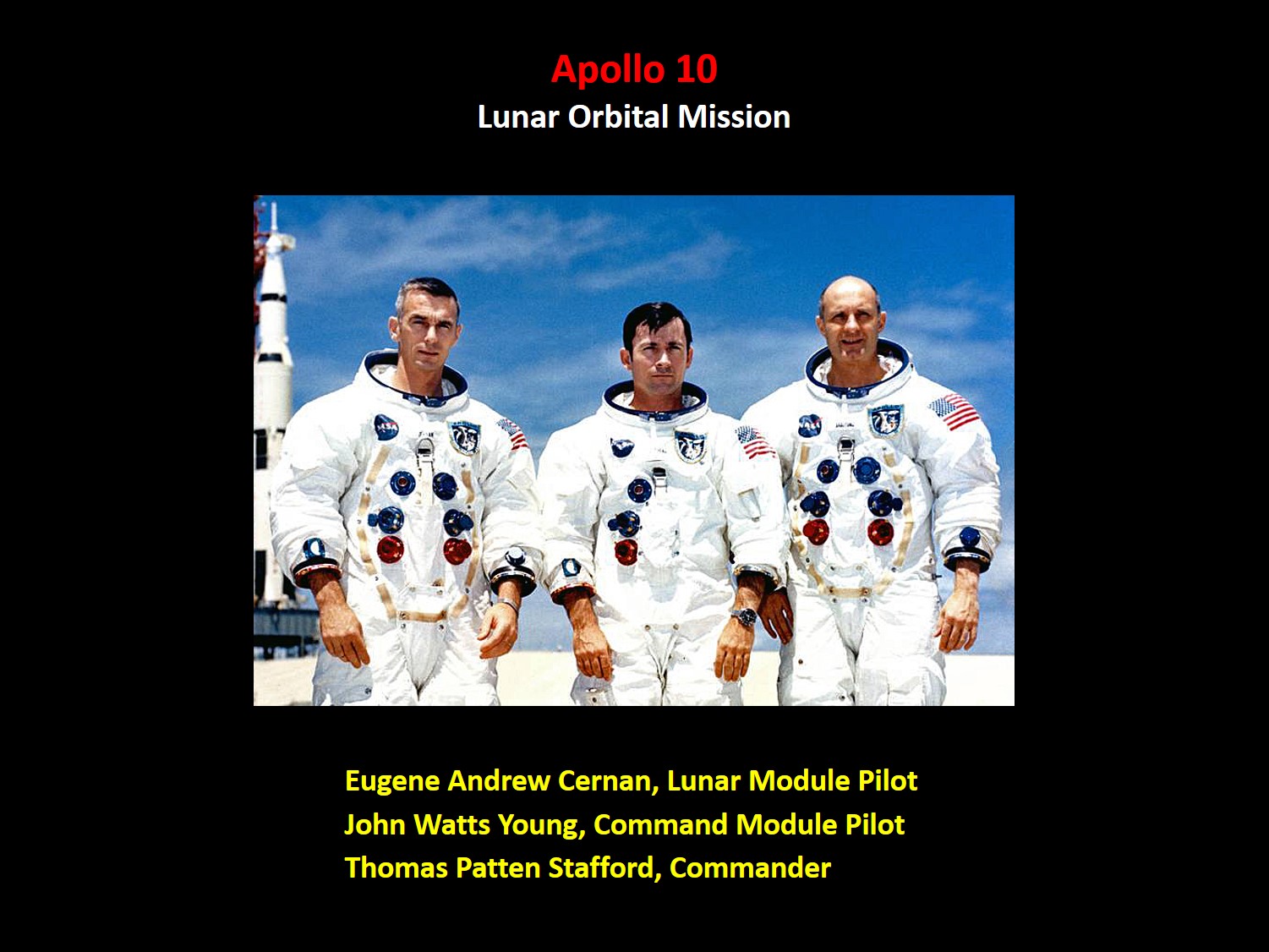
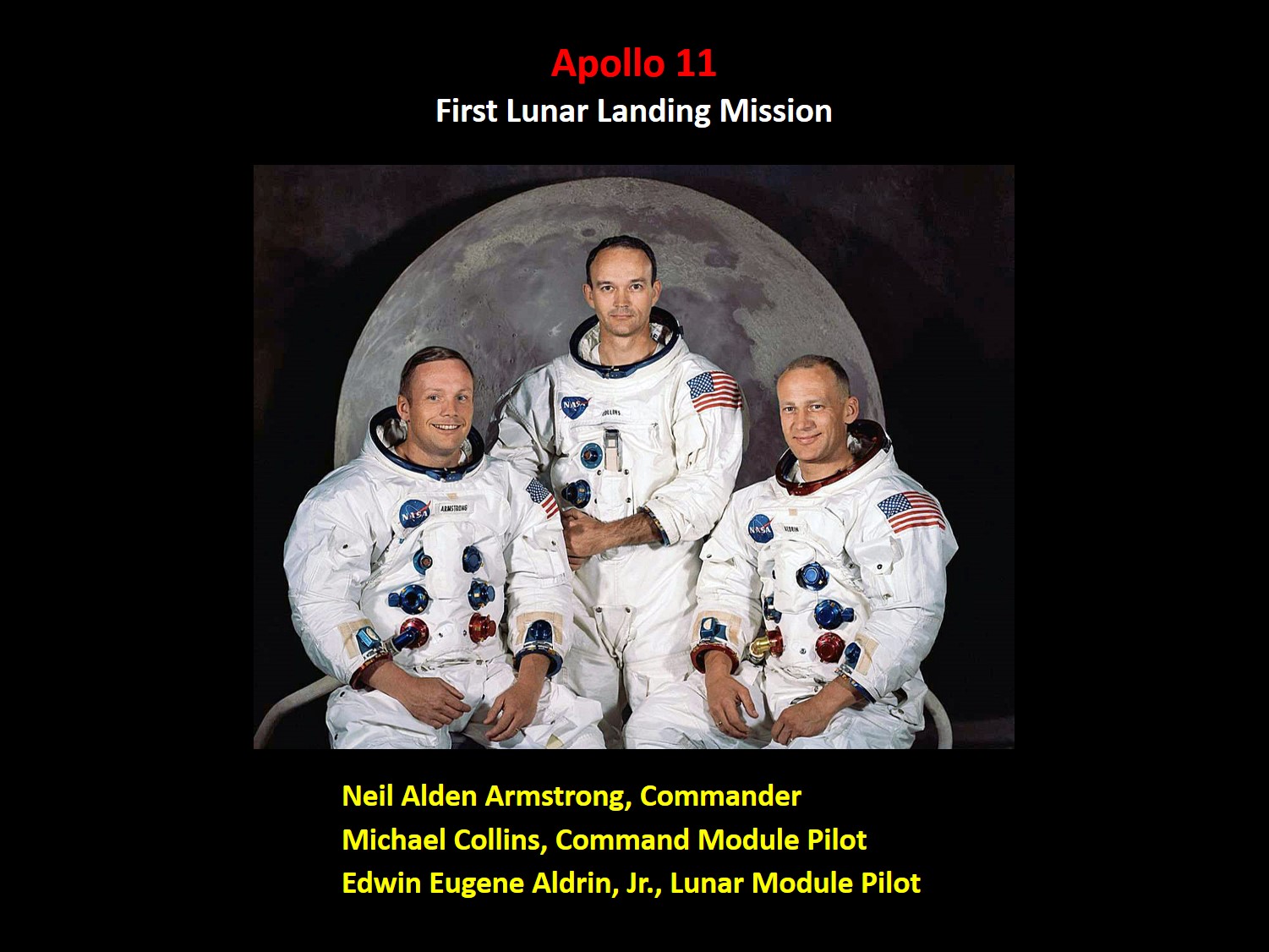
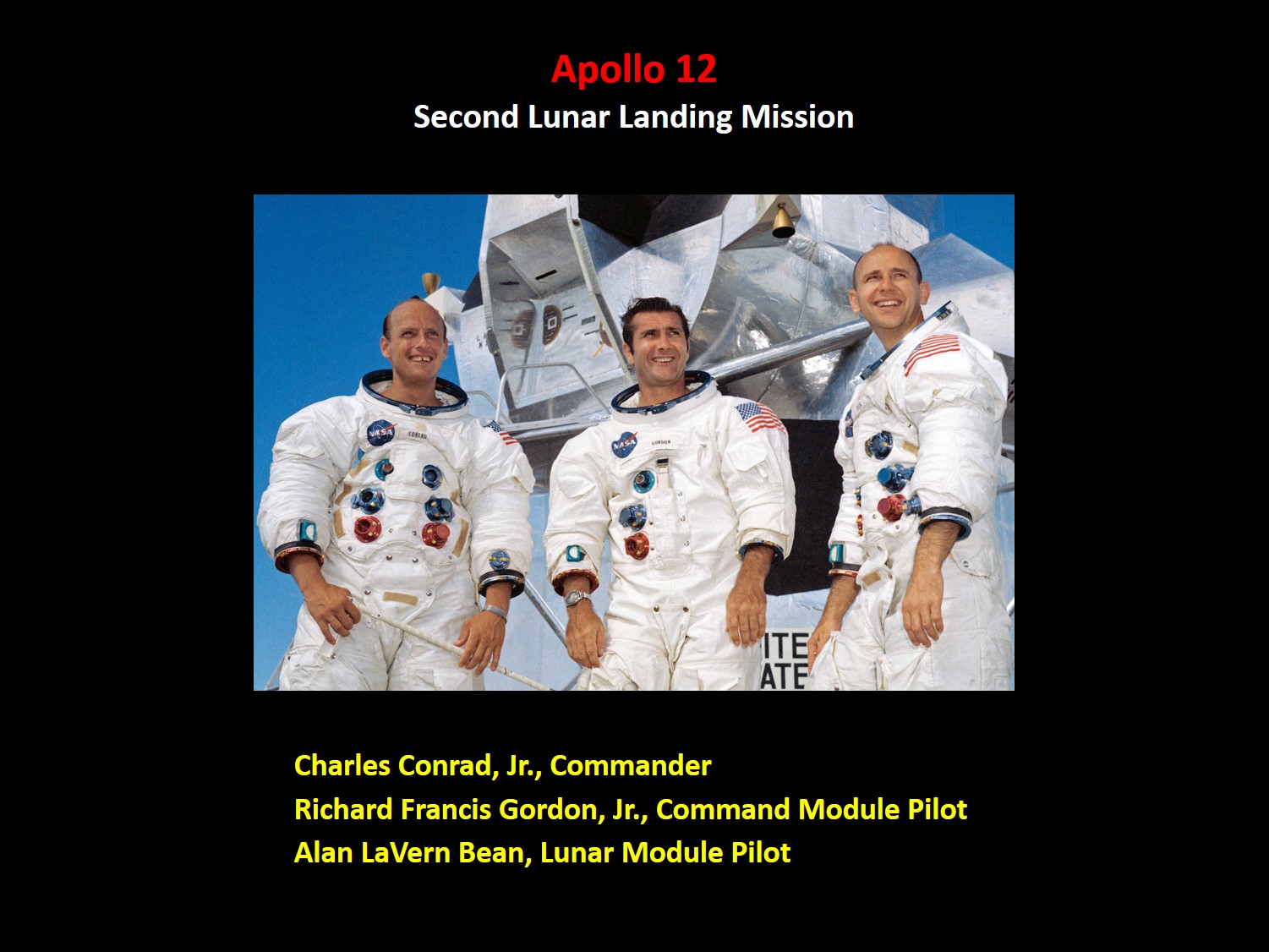


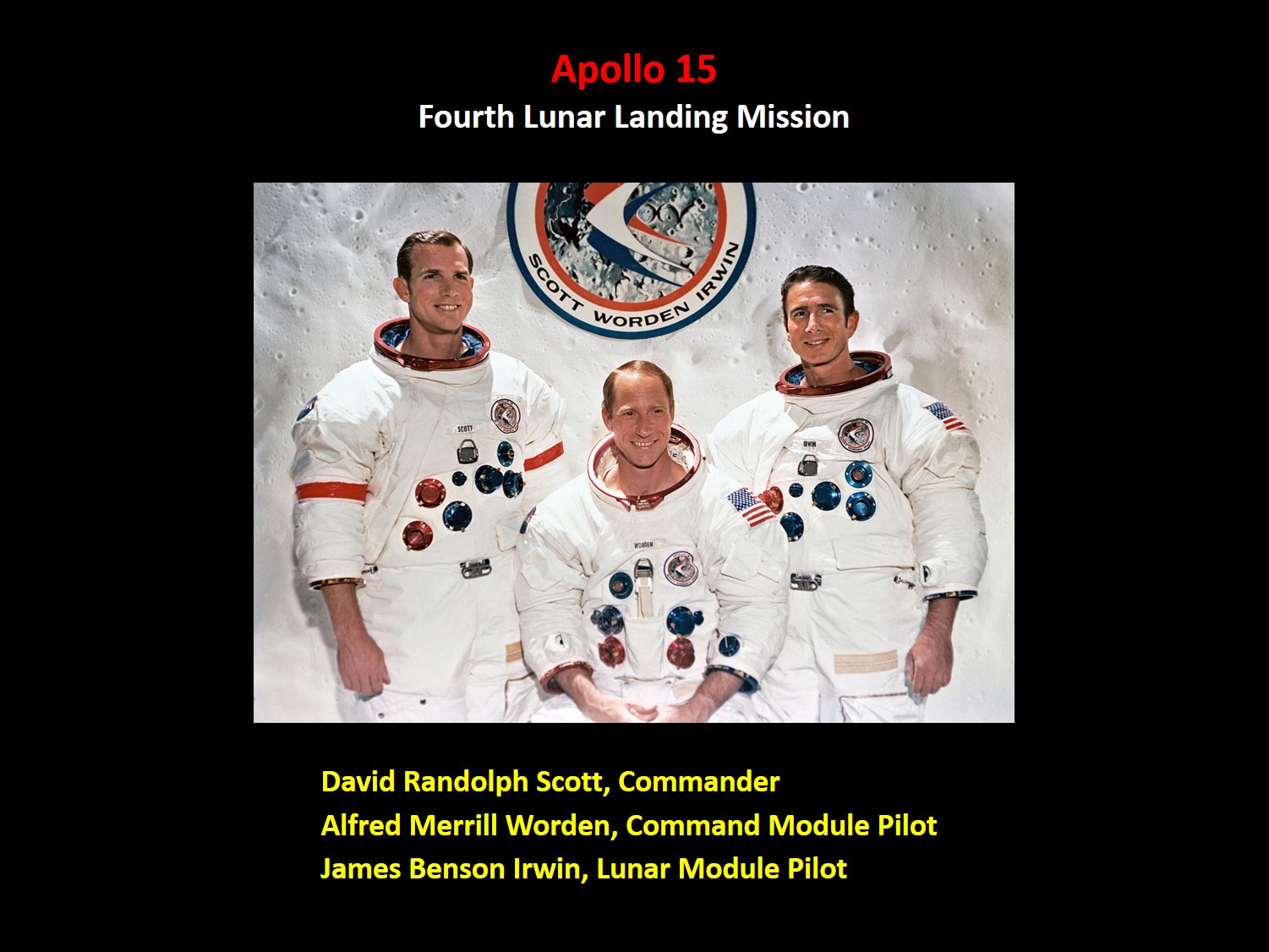
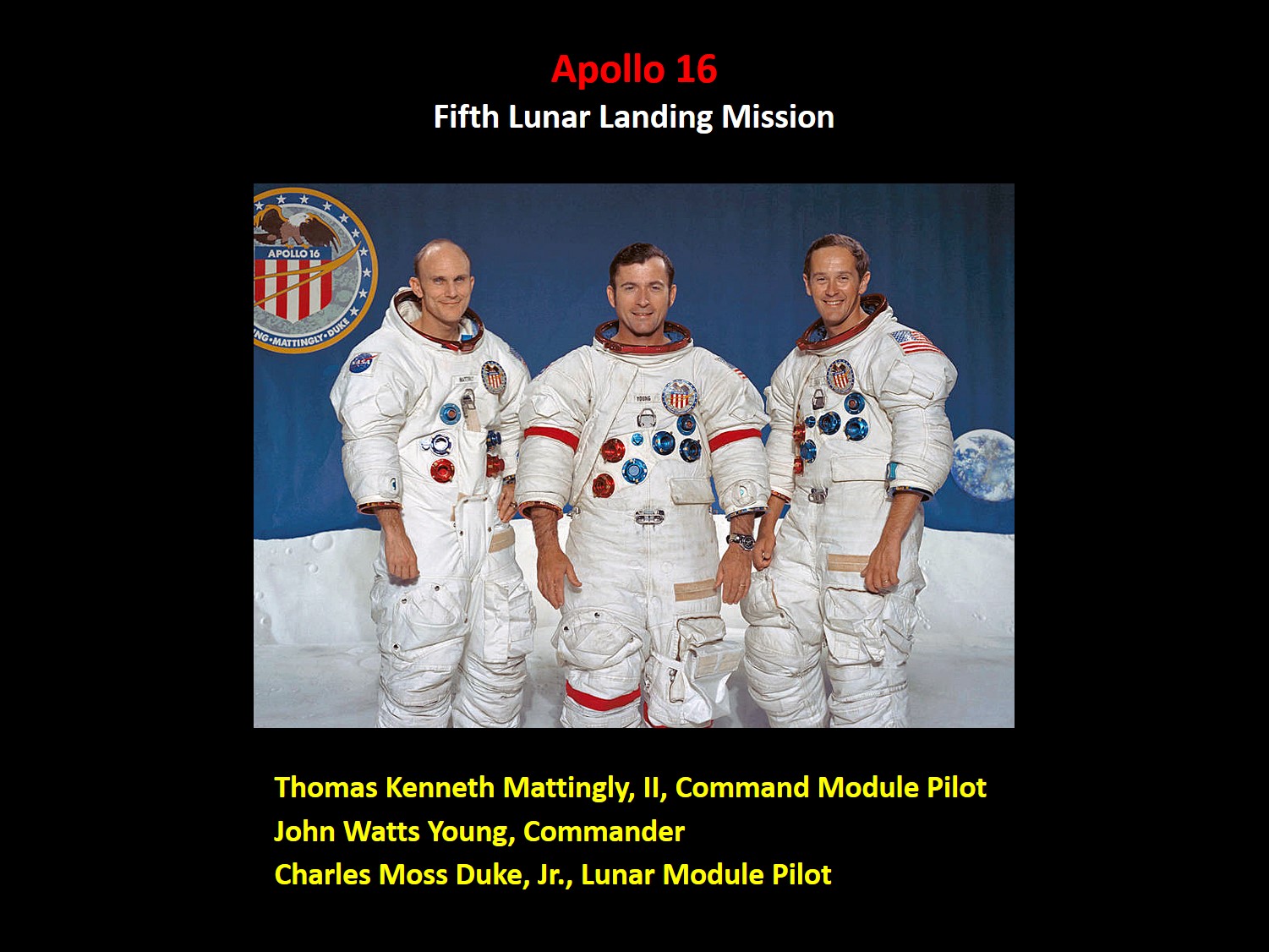
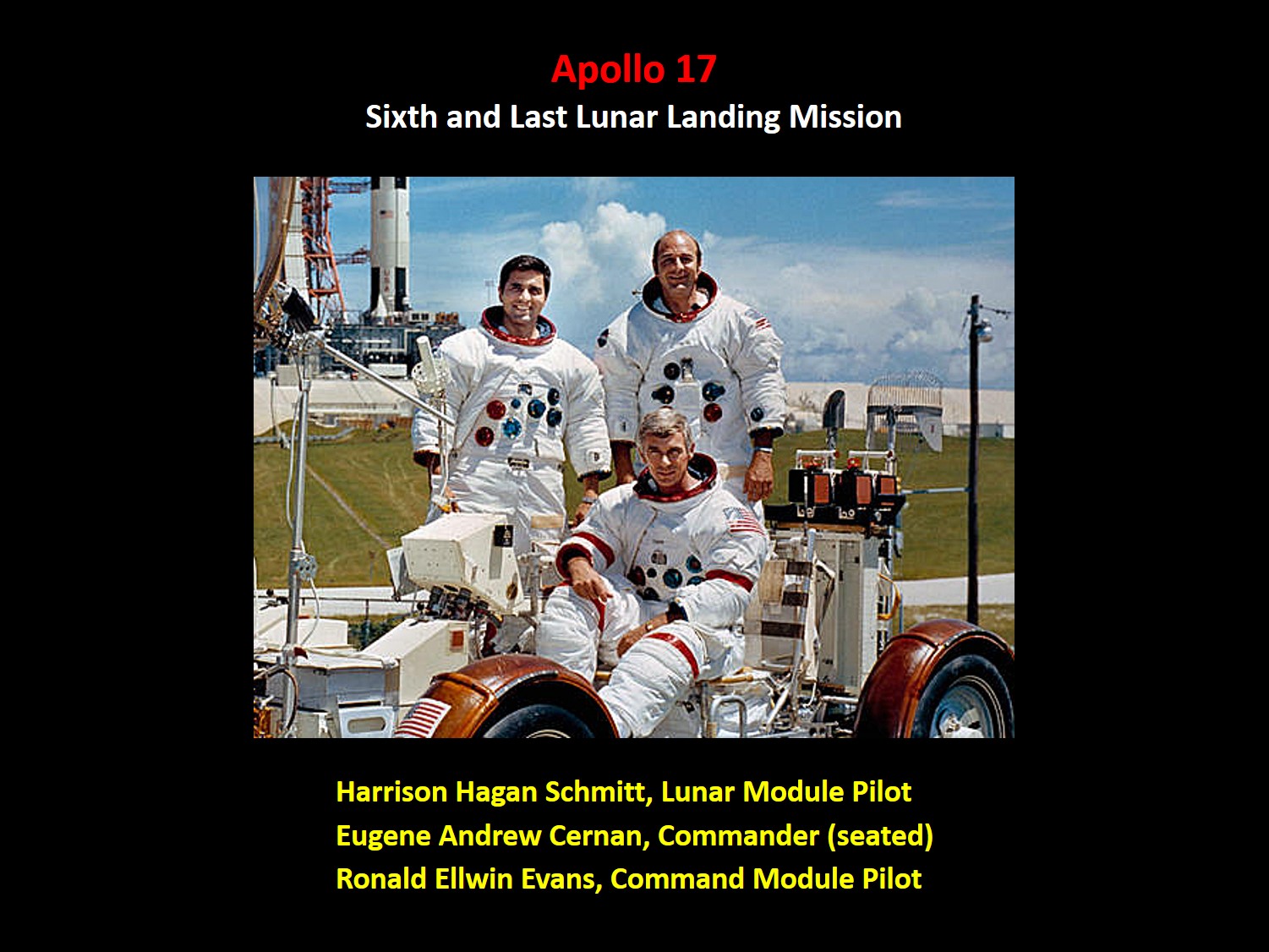
A total of eleven (11) Project Apollo missions were flown. Six (6) Apollo flights were lunar landing missions. These landing sites are shown on the lunar map below. Also summarized below are some highlights of each of the Project Apollo missions.
